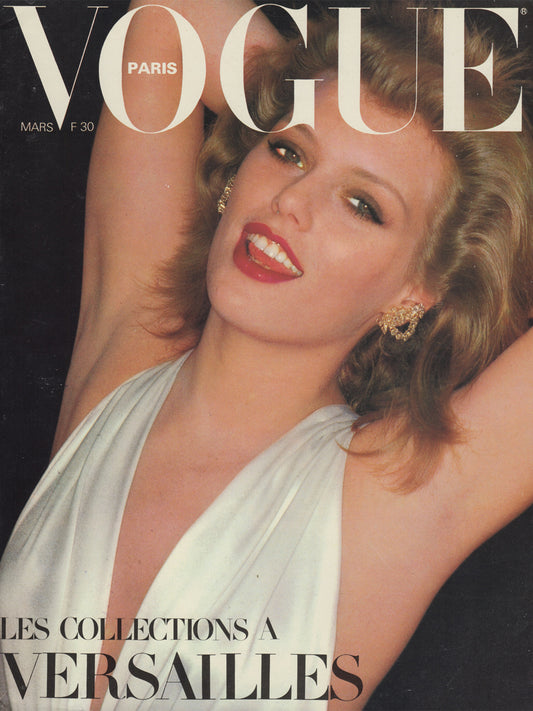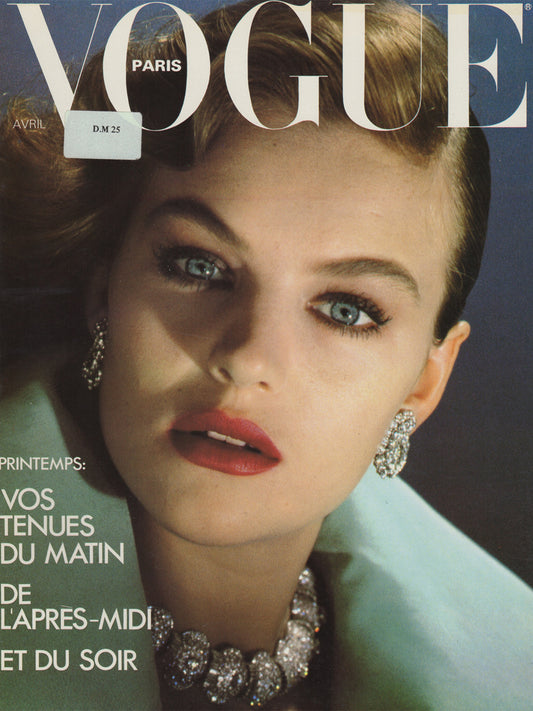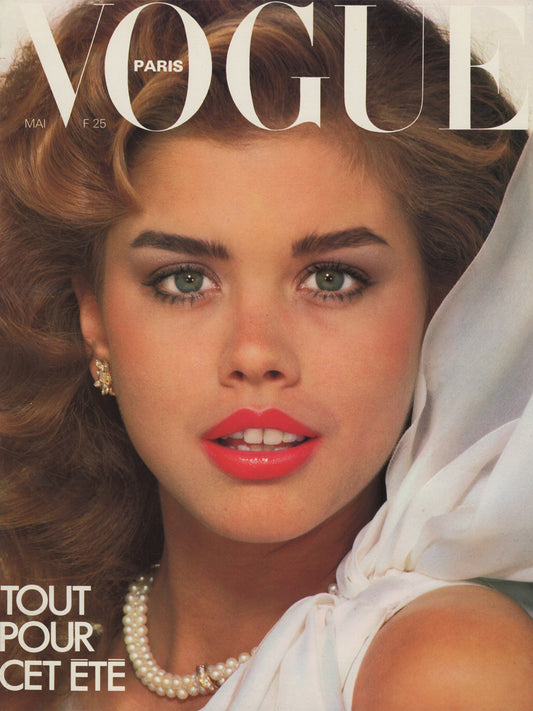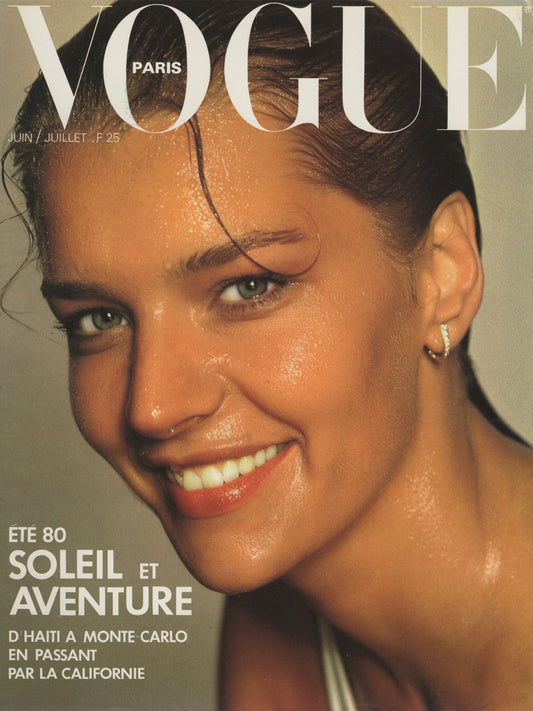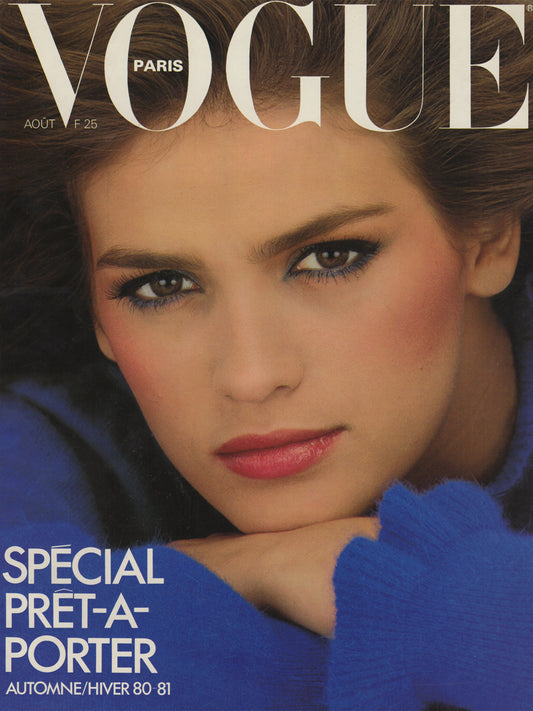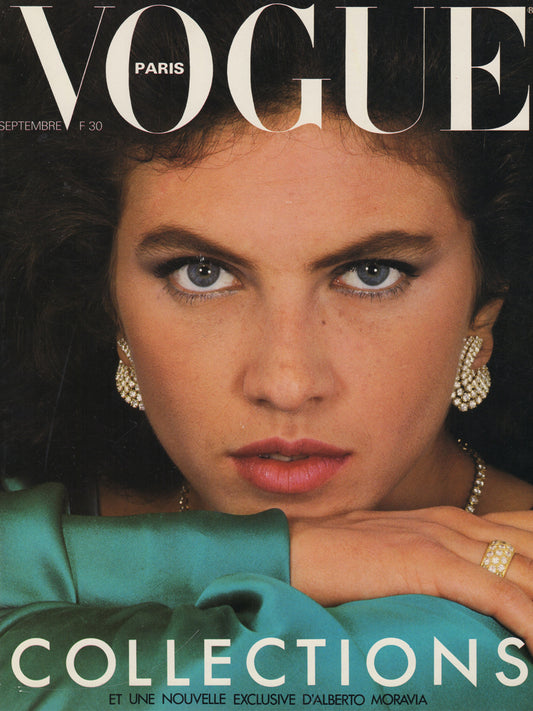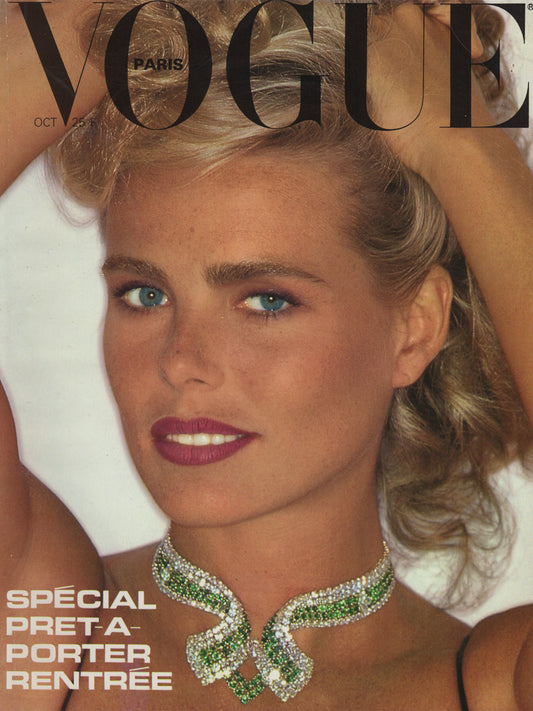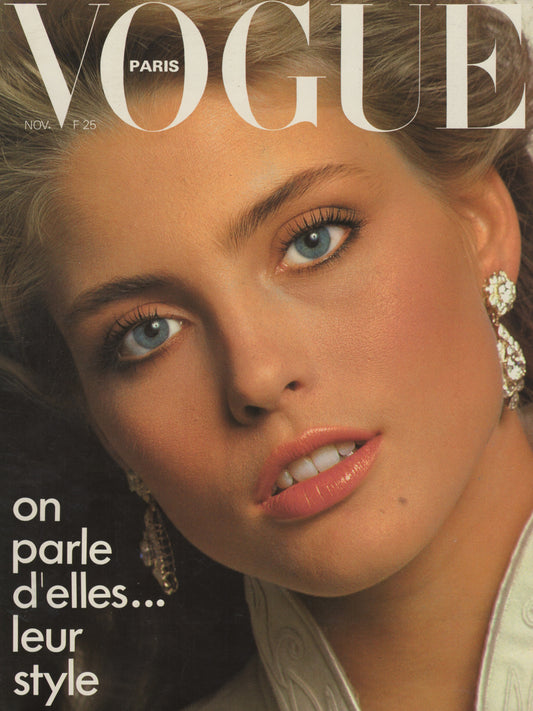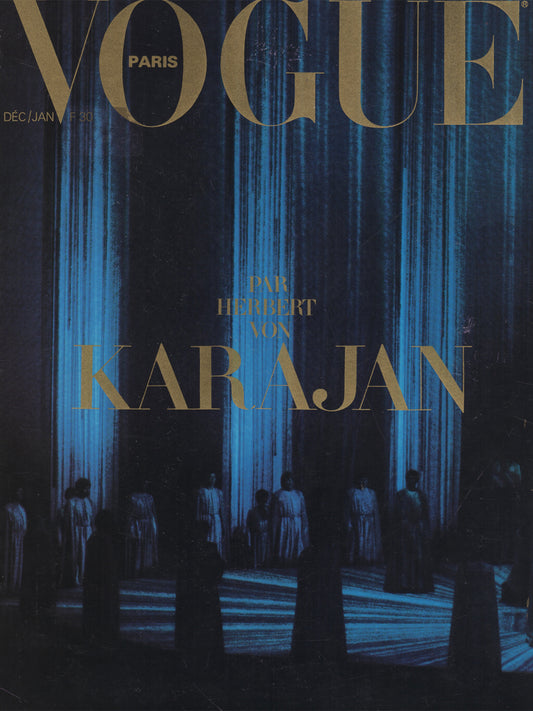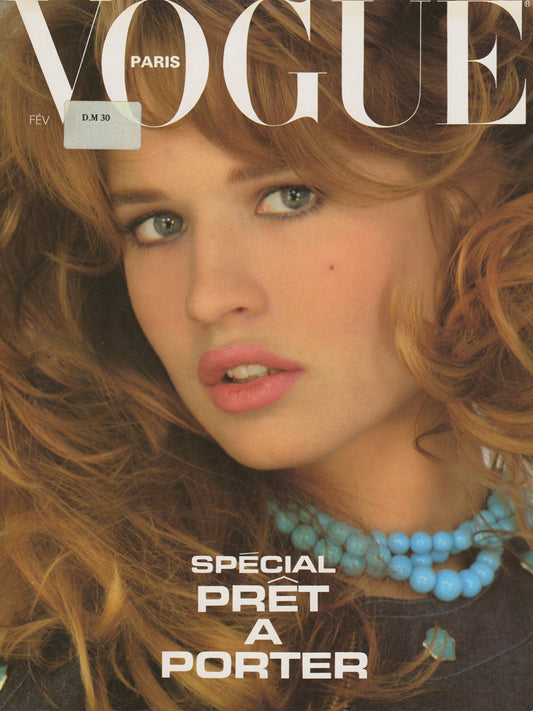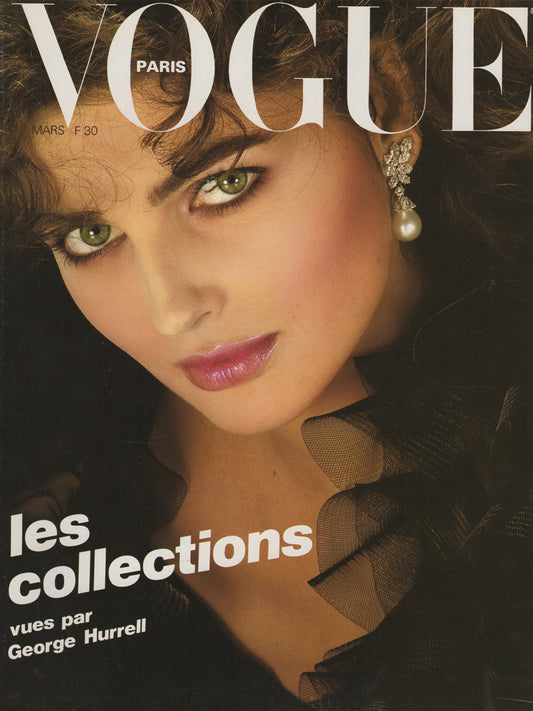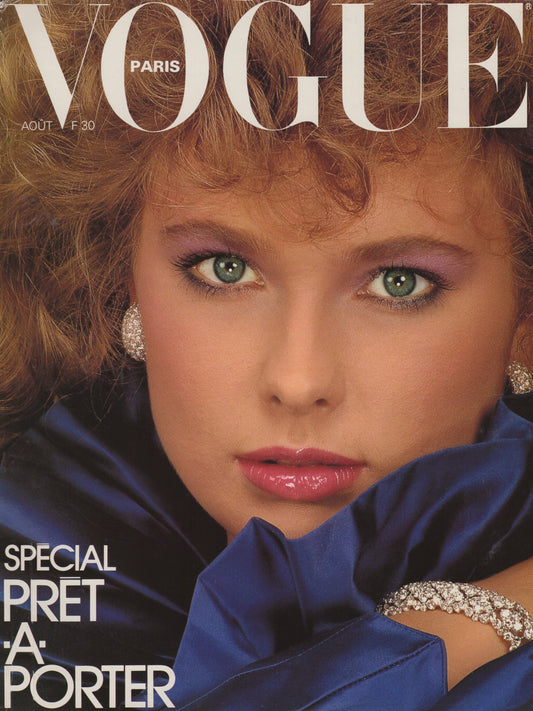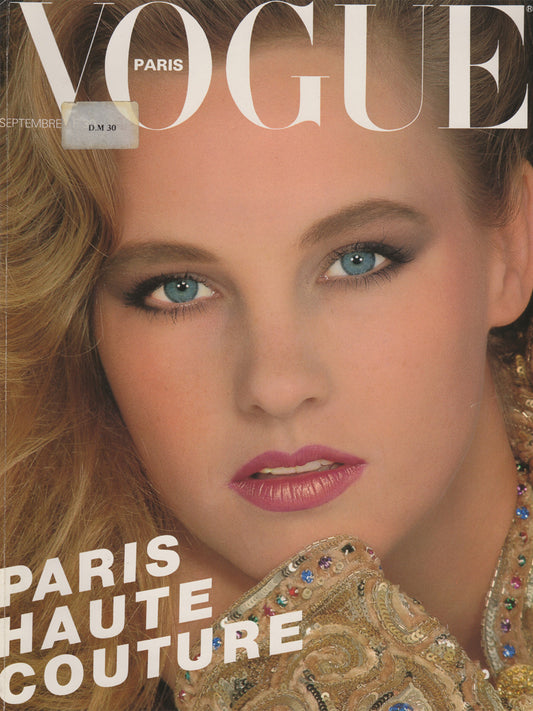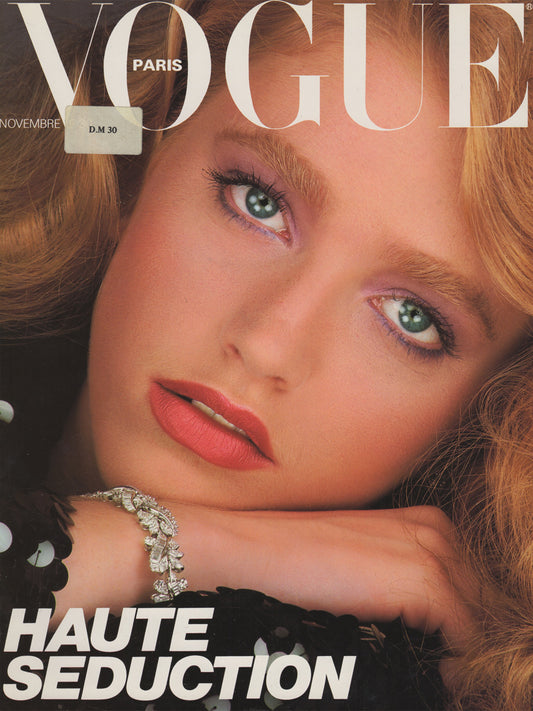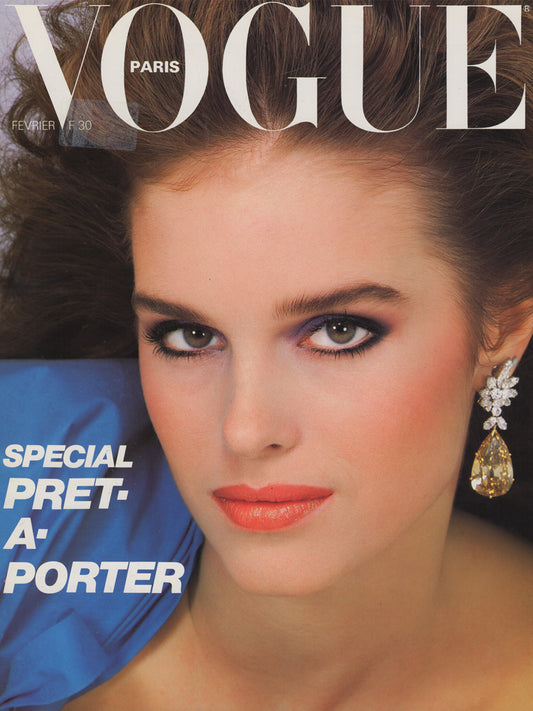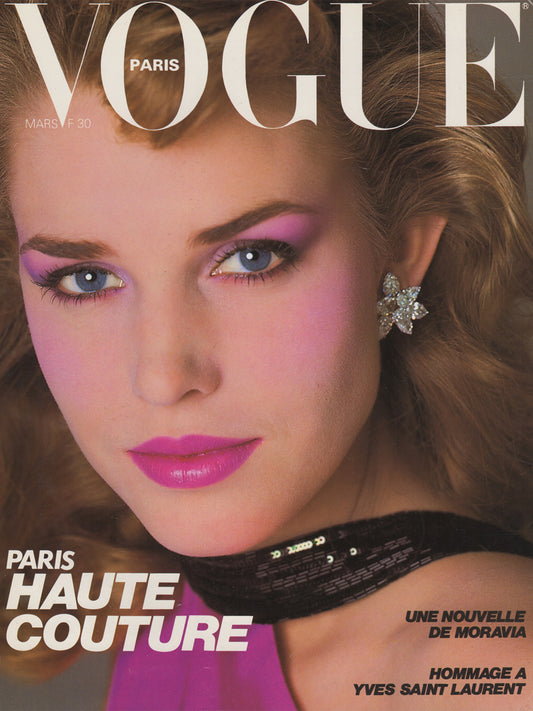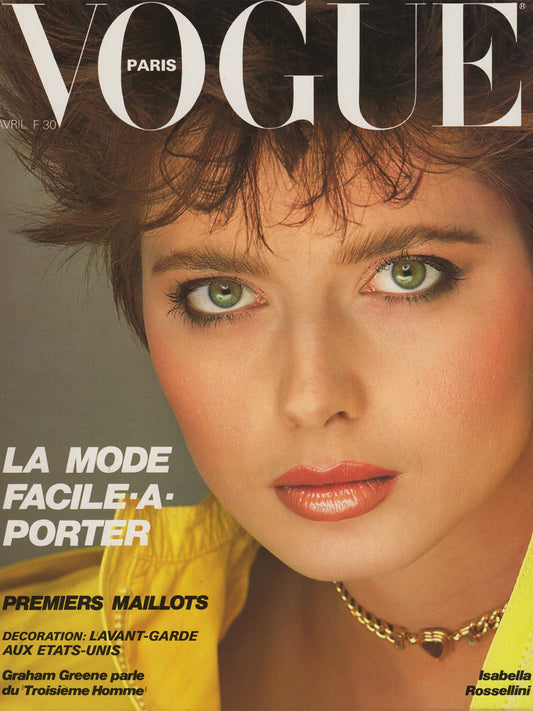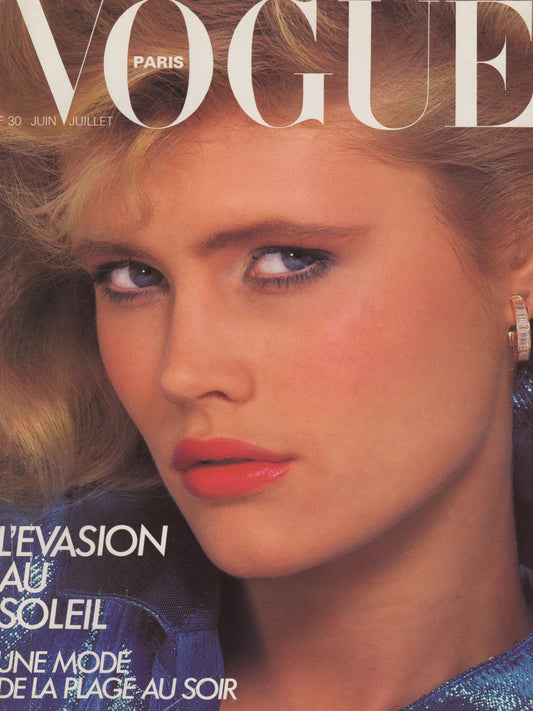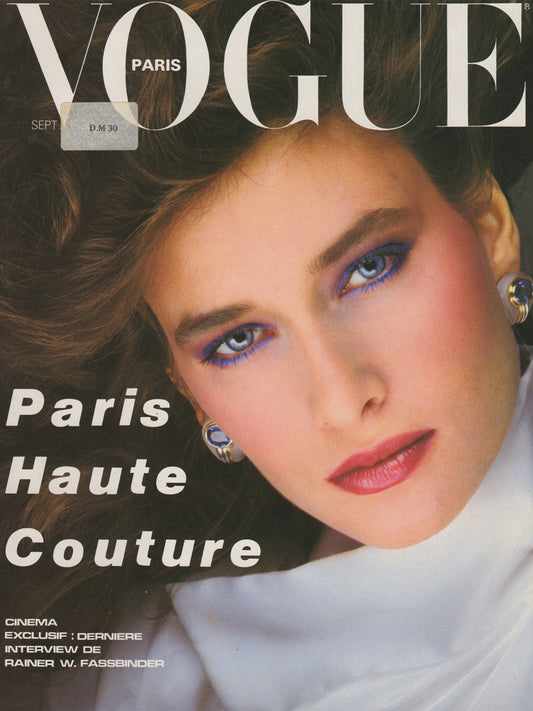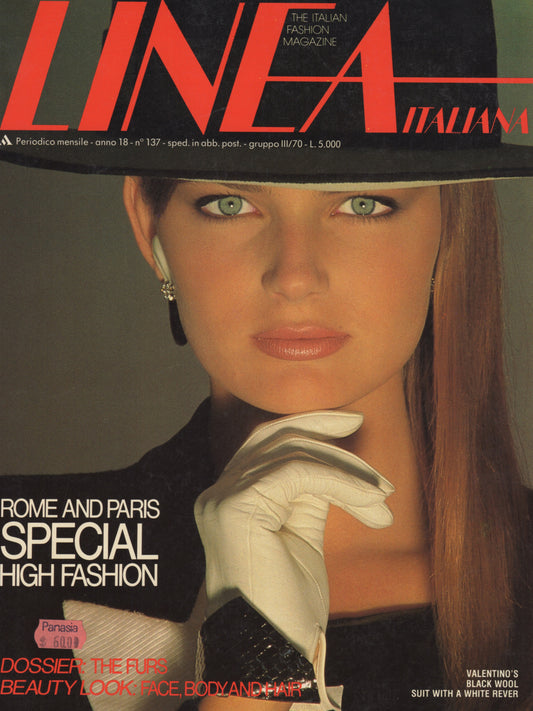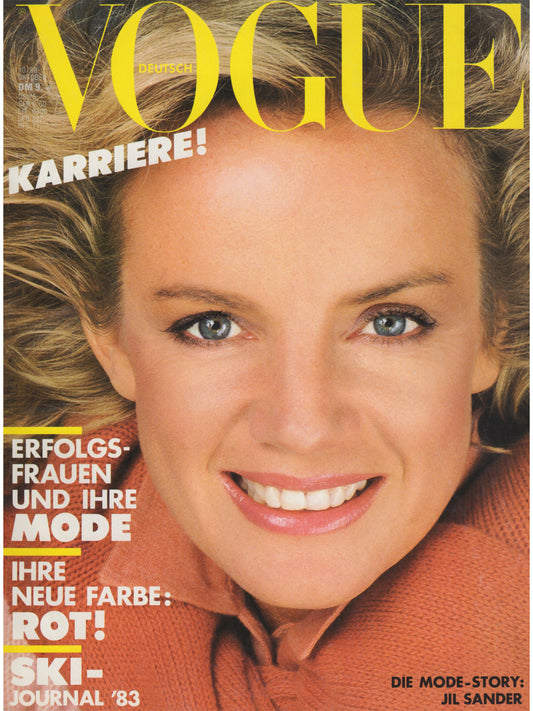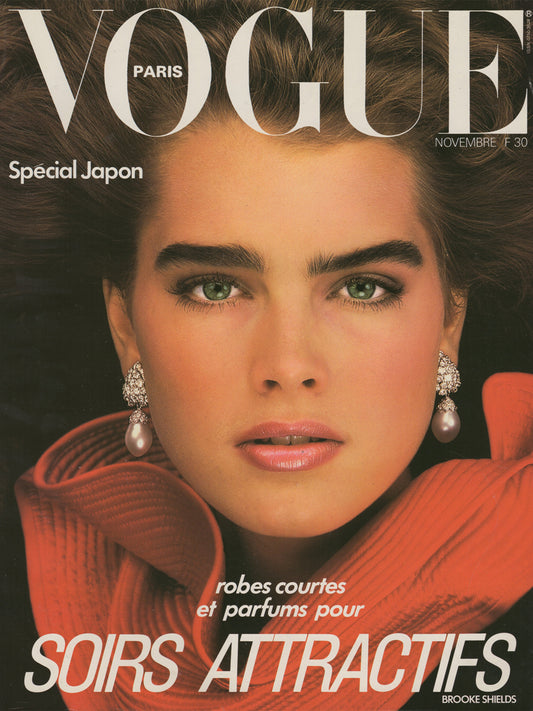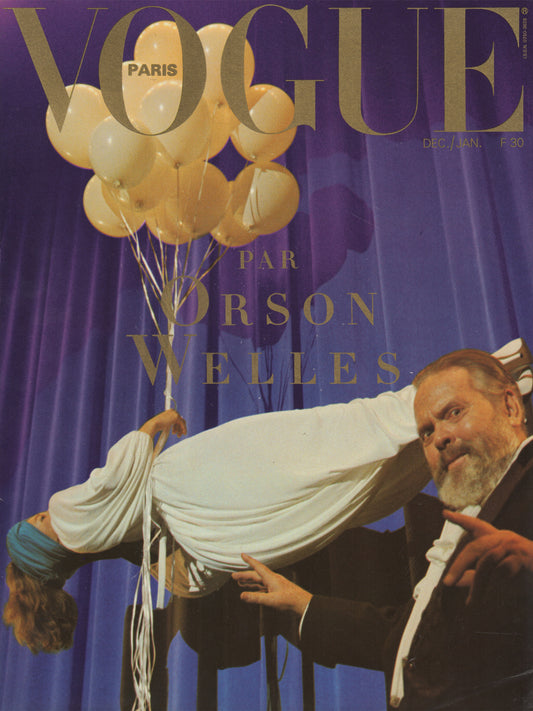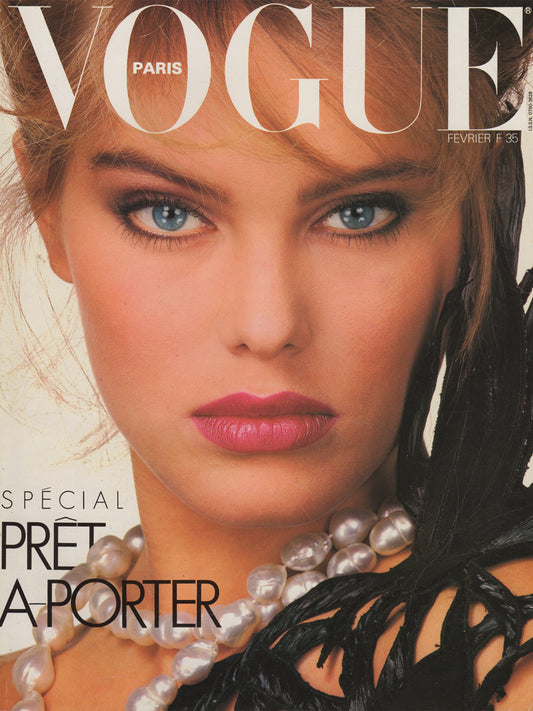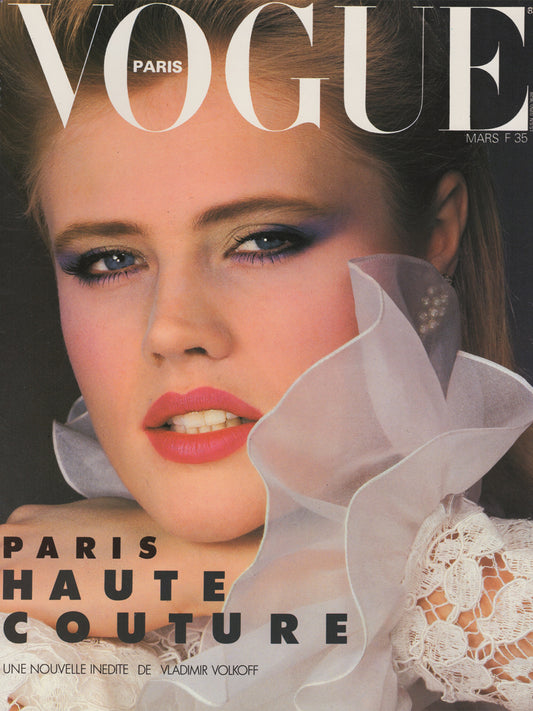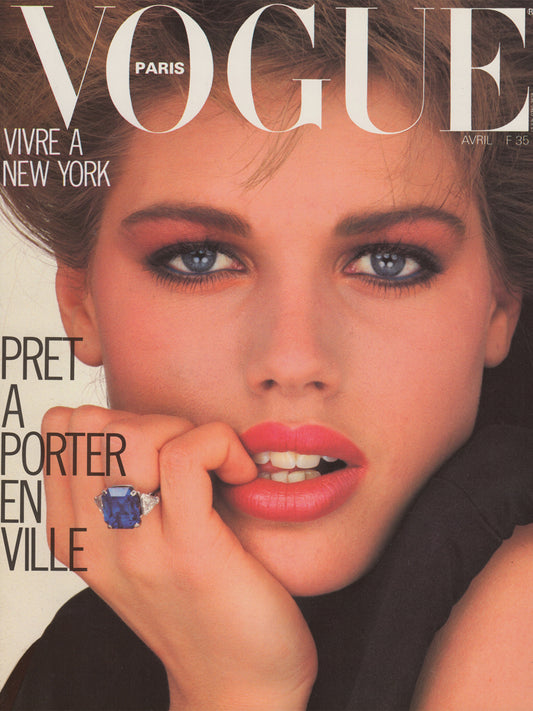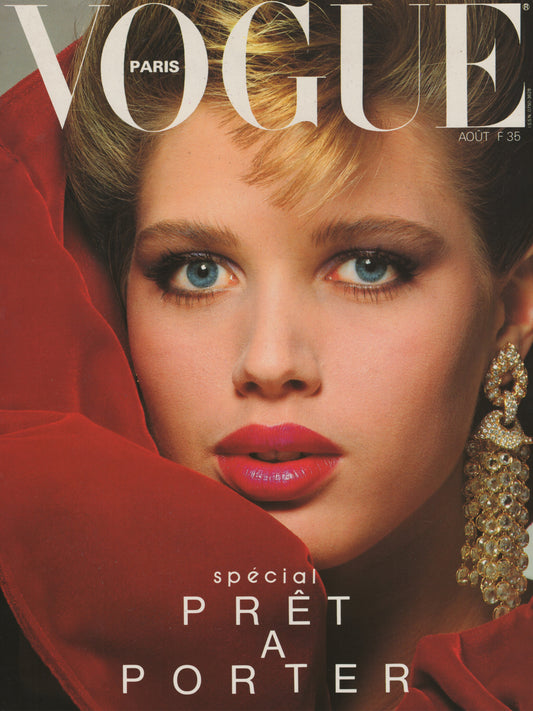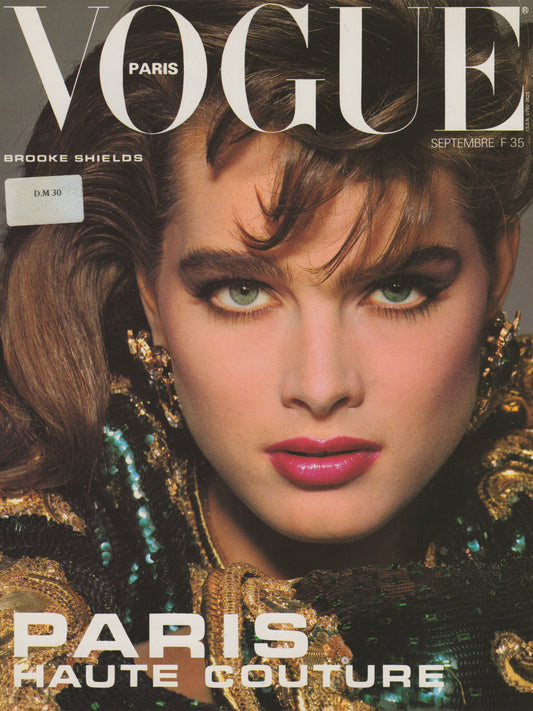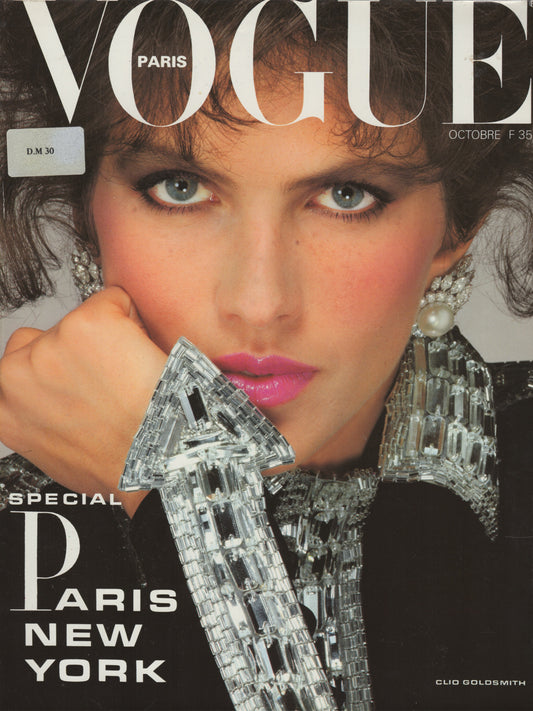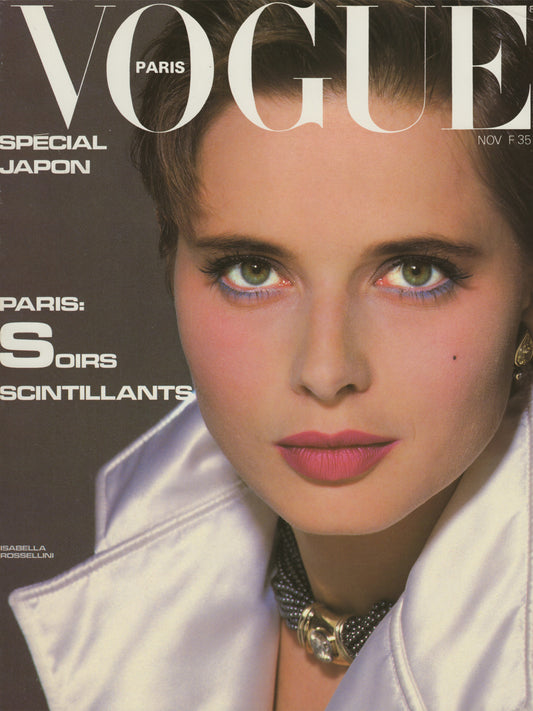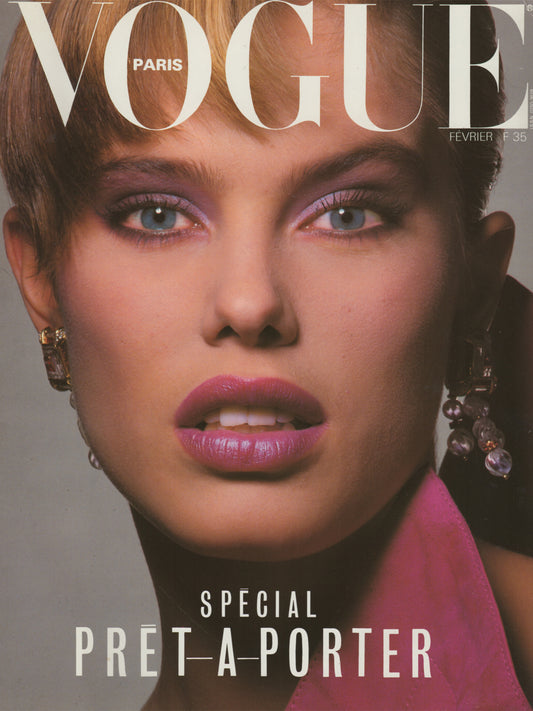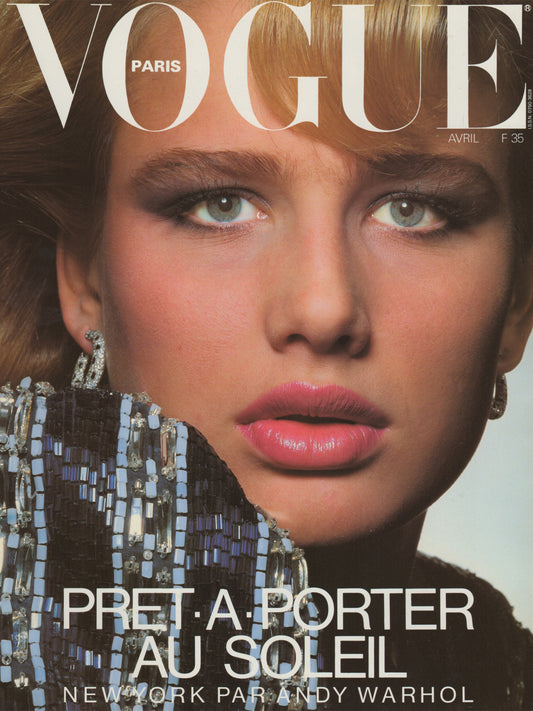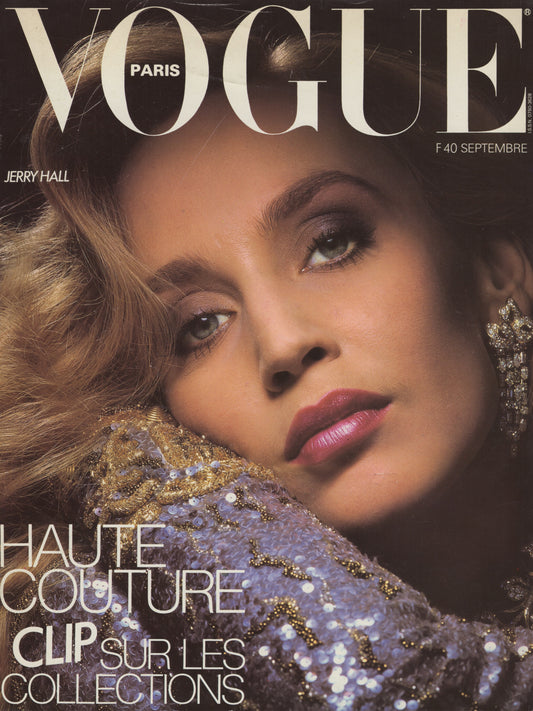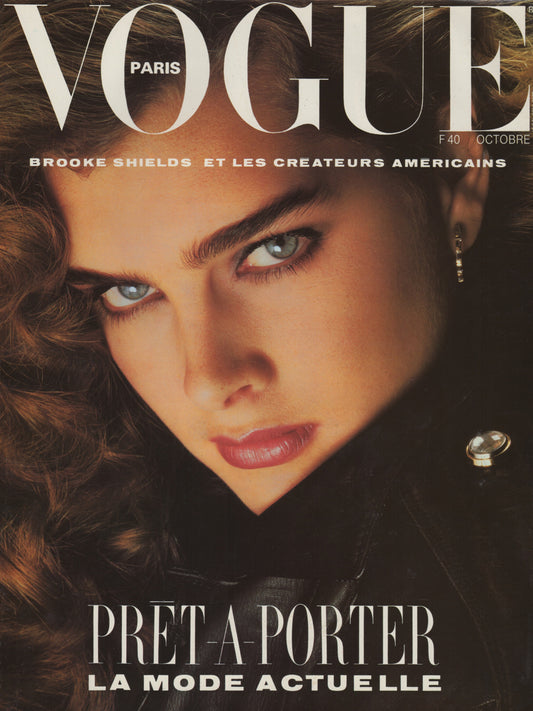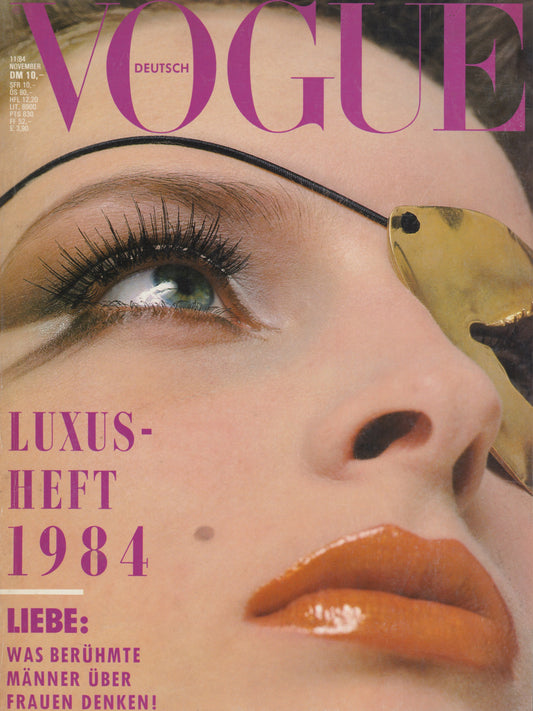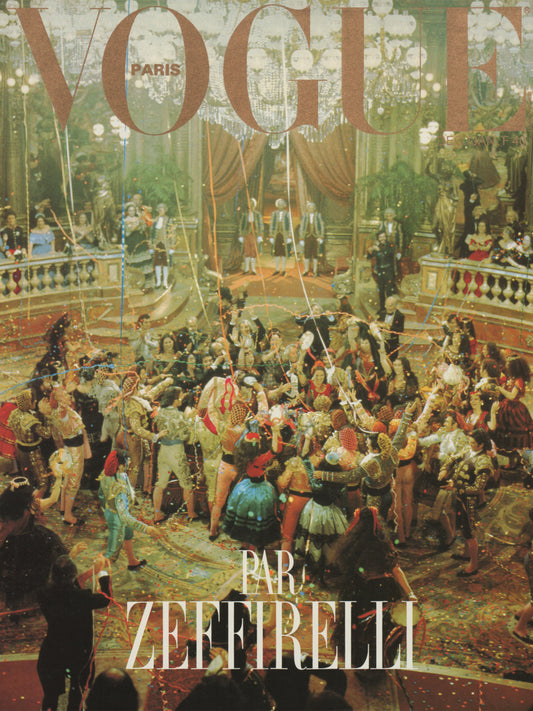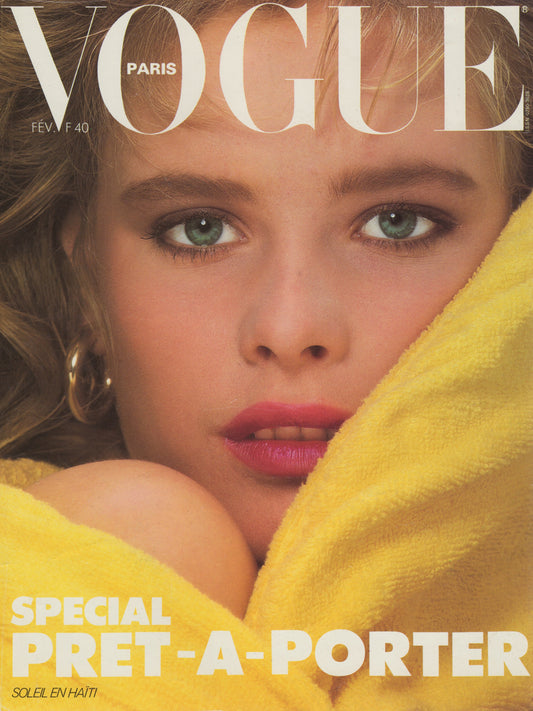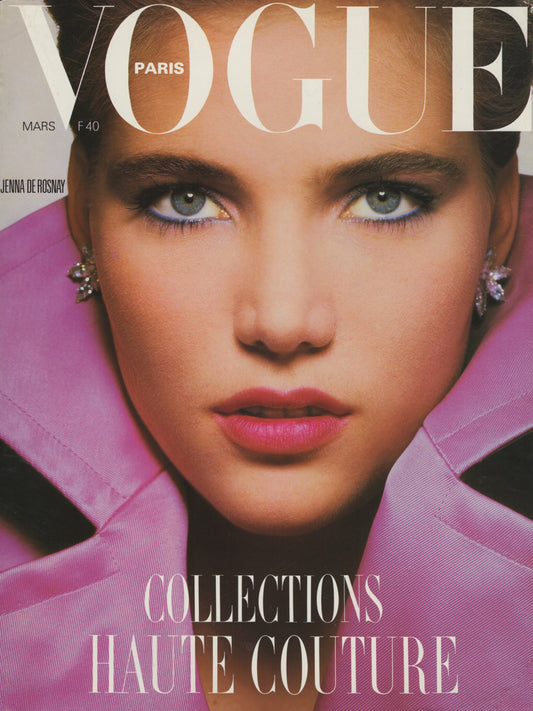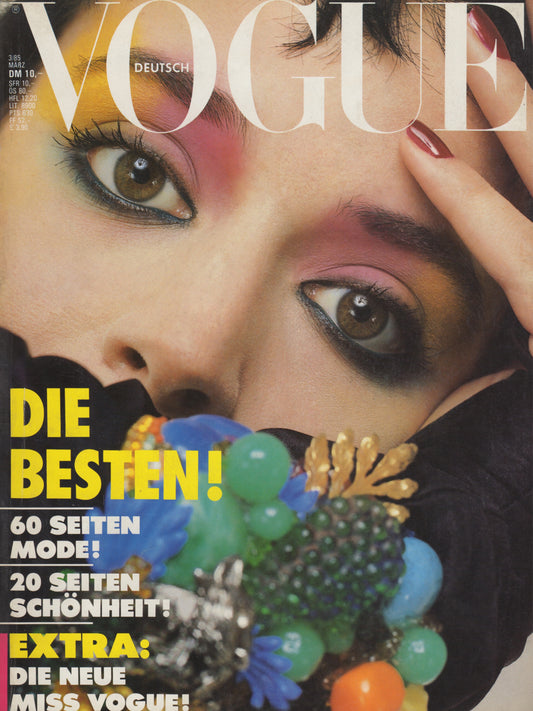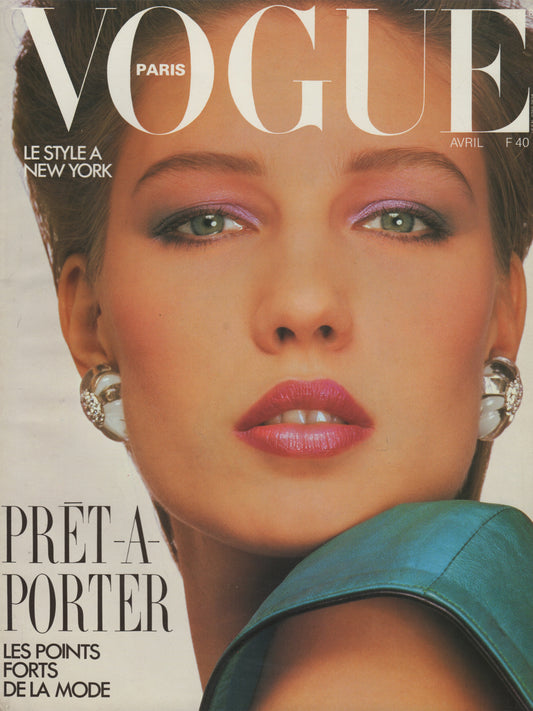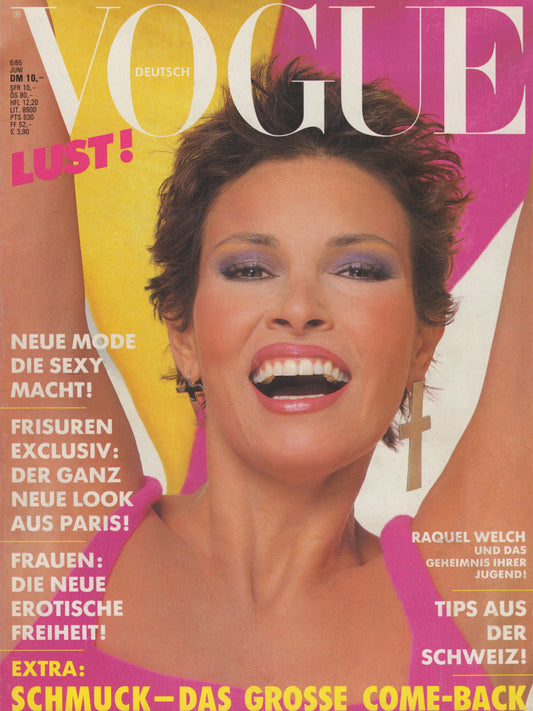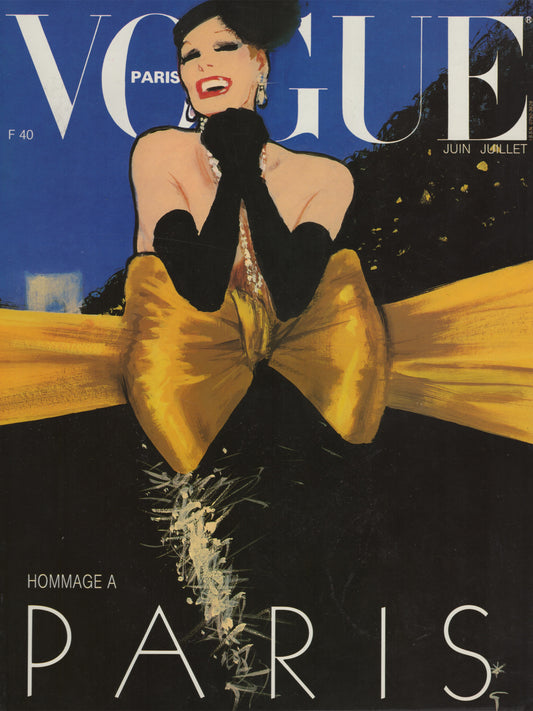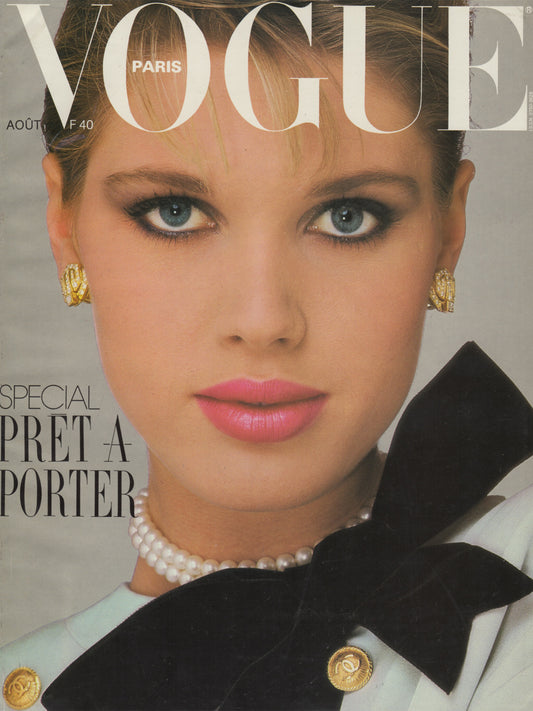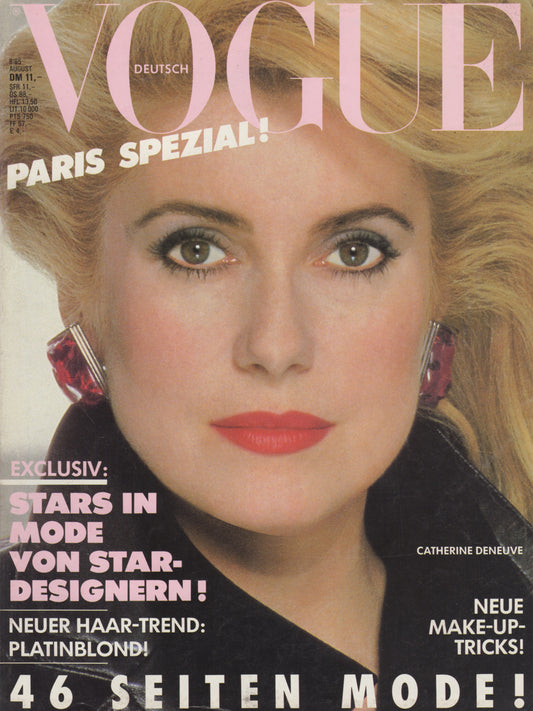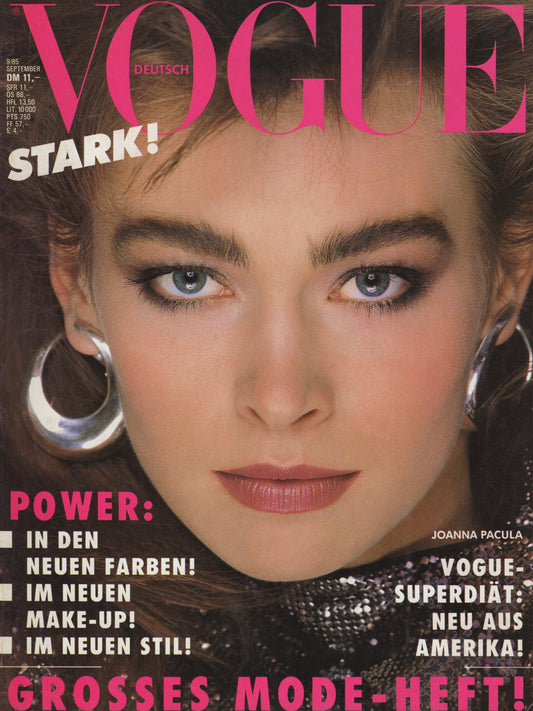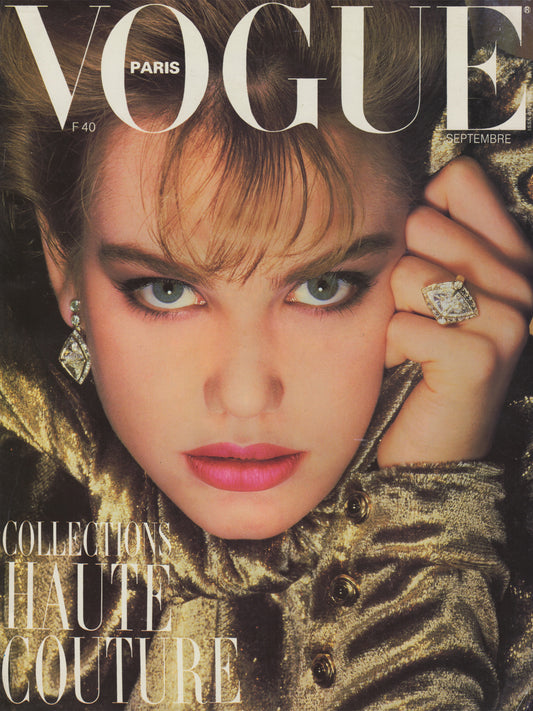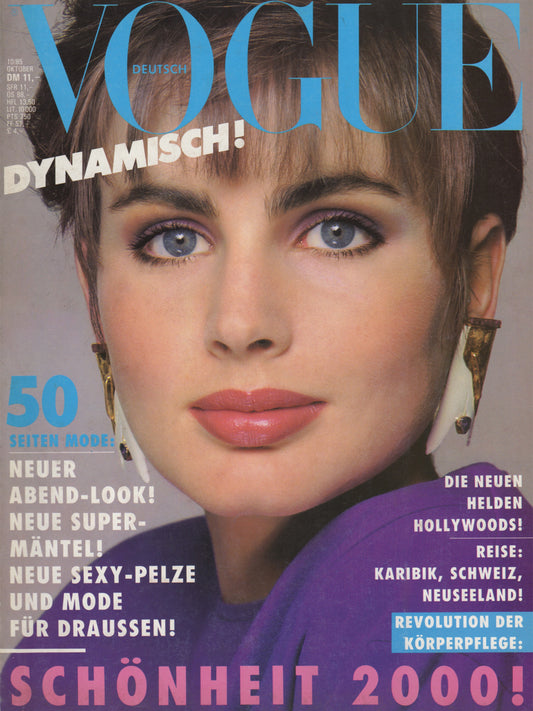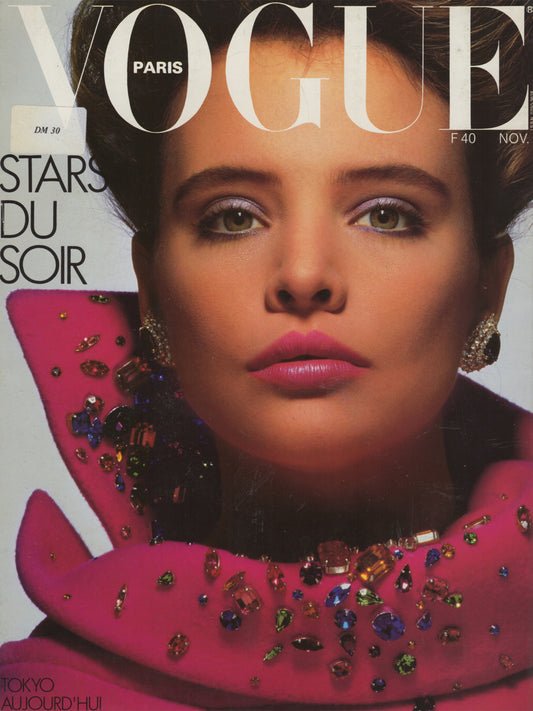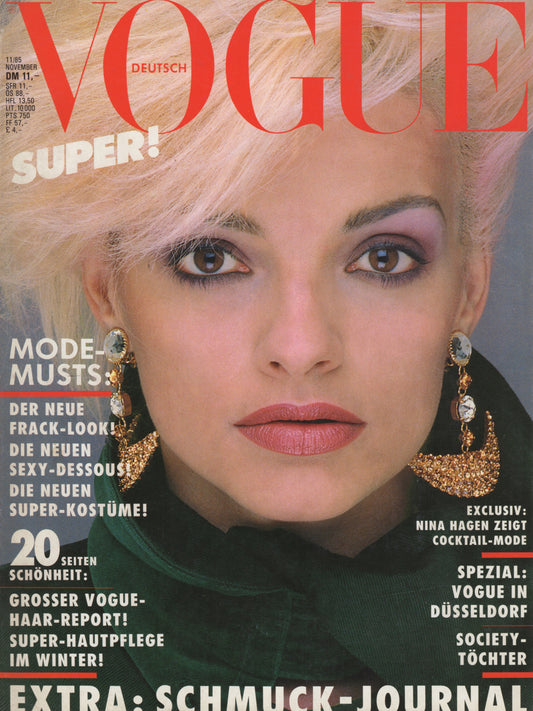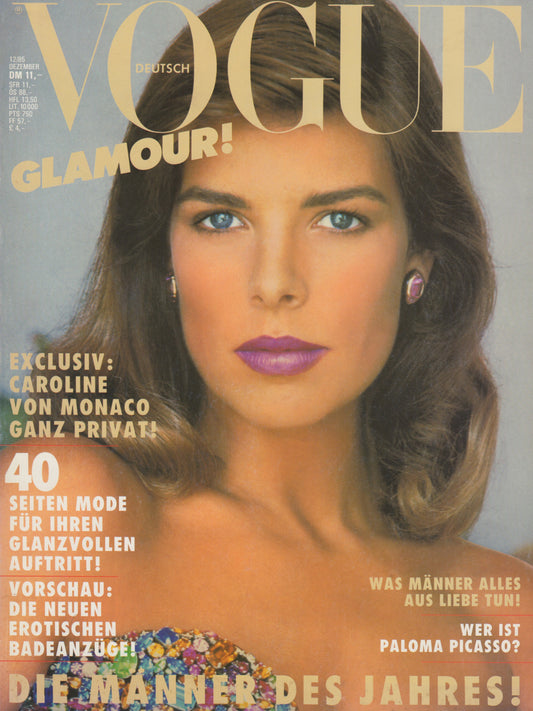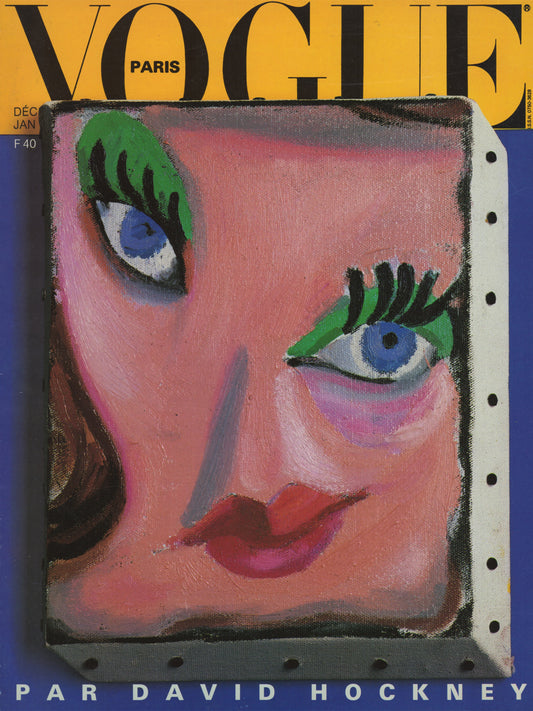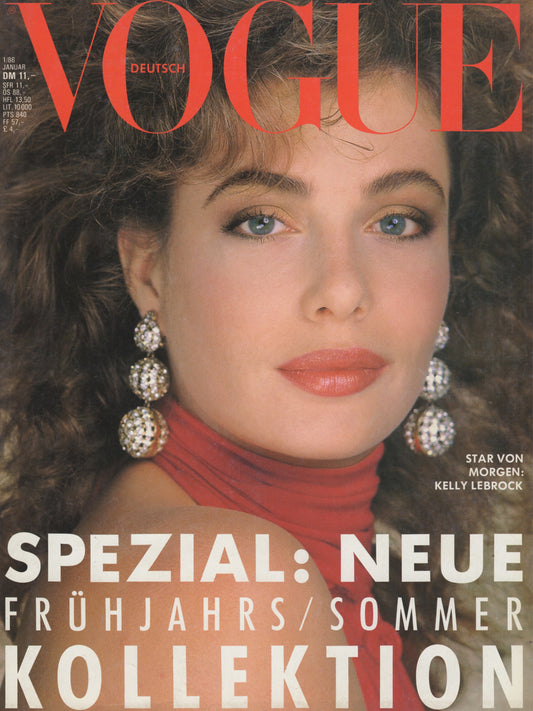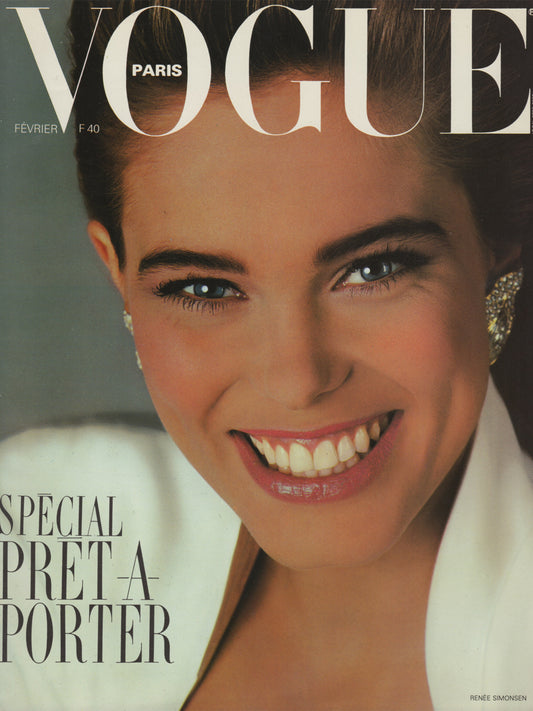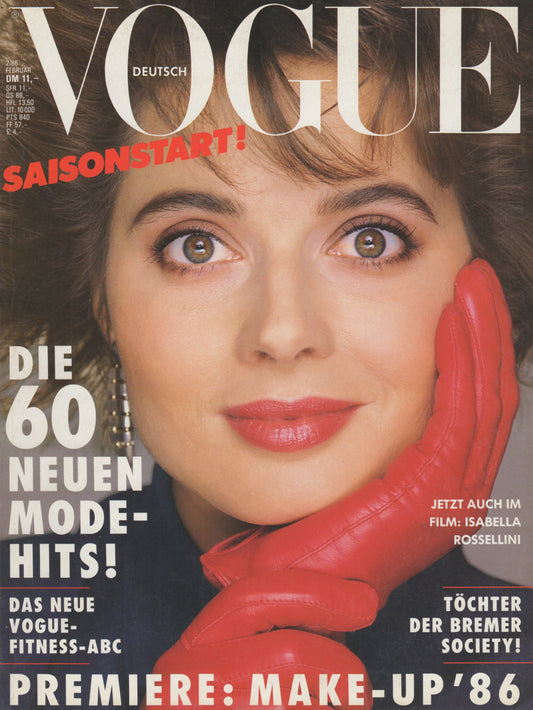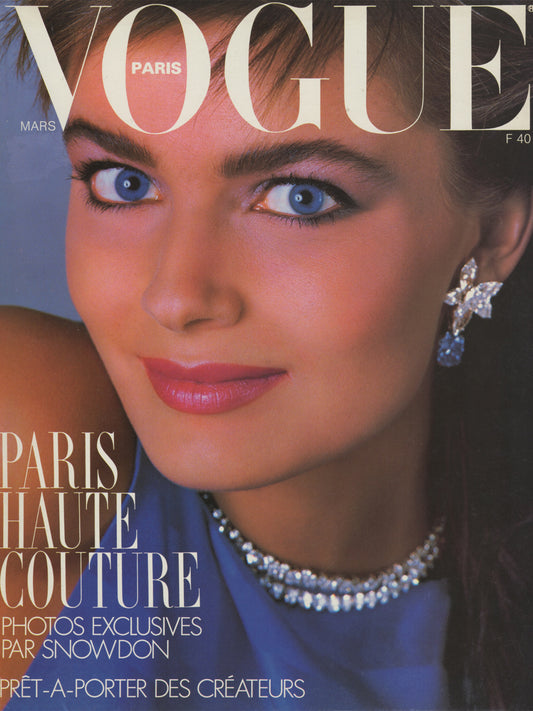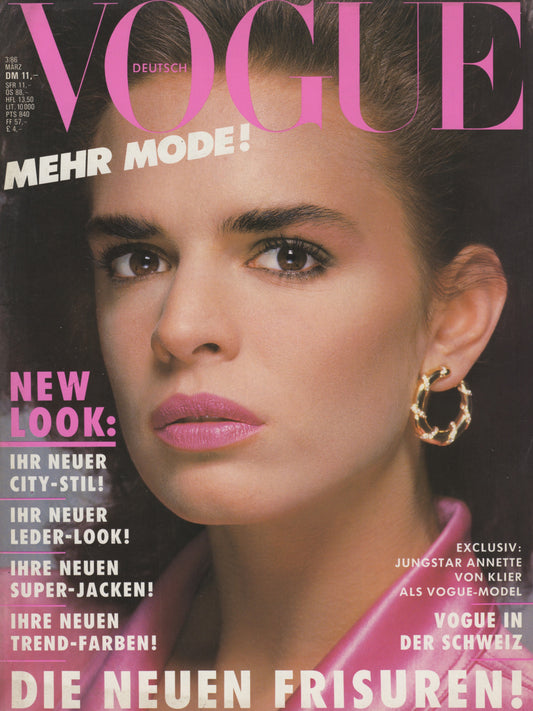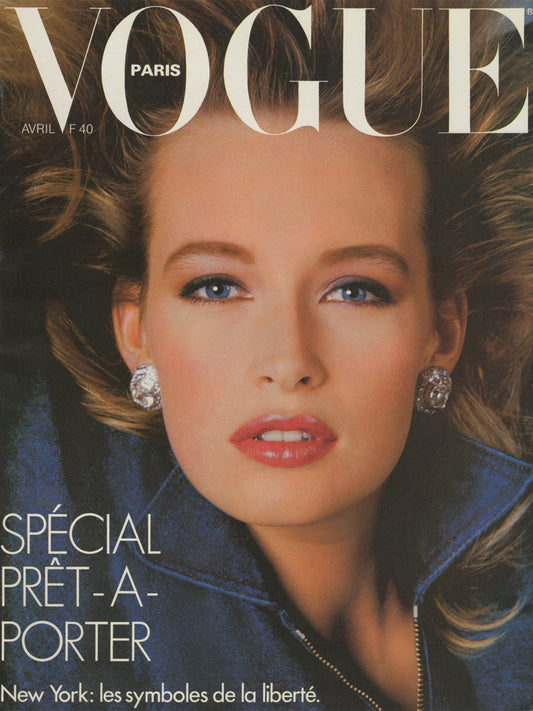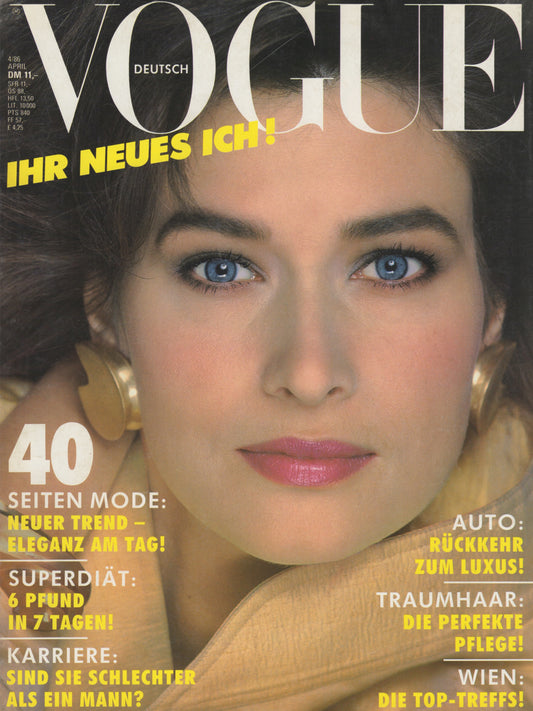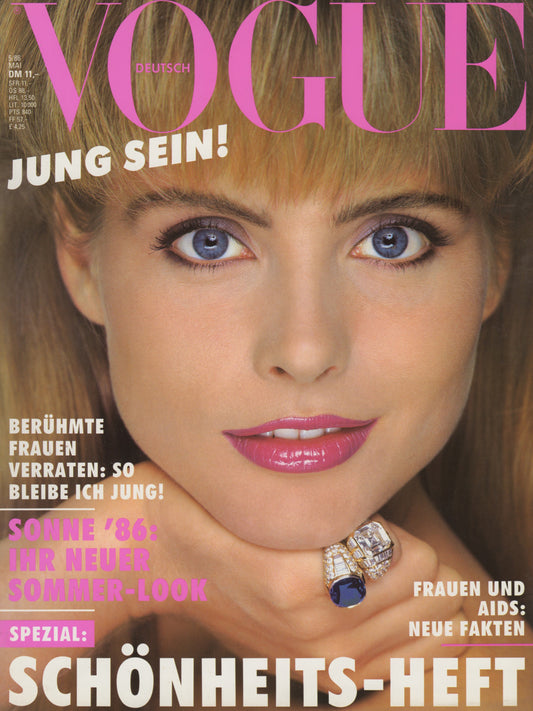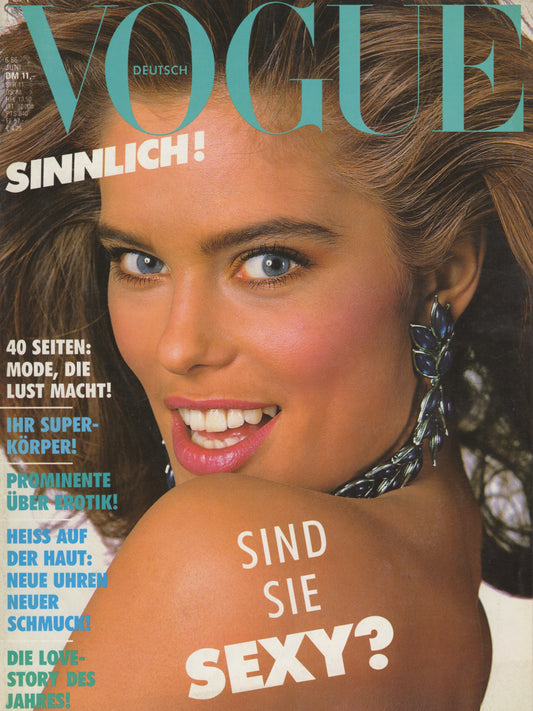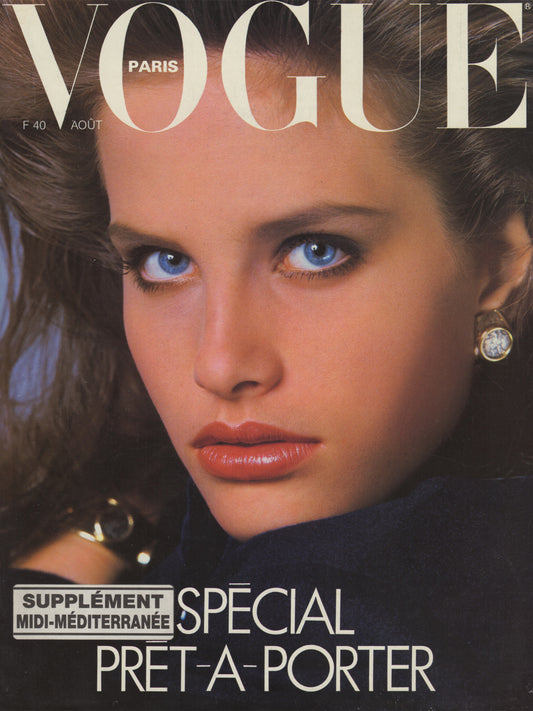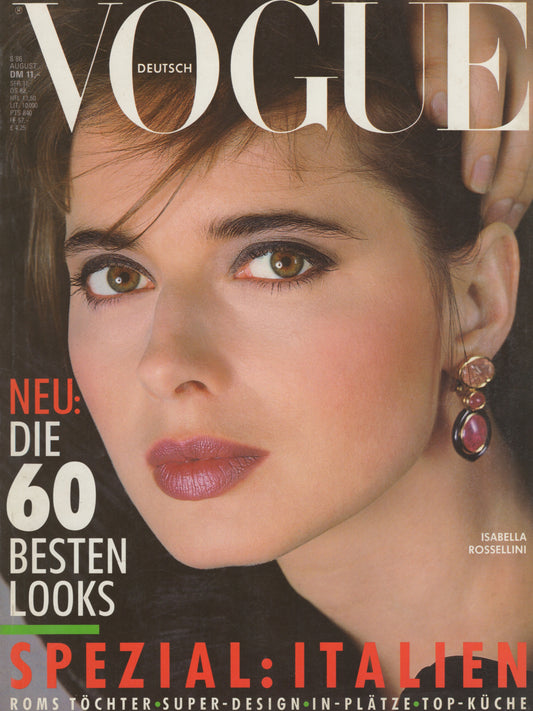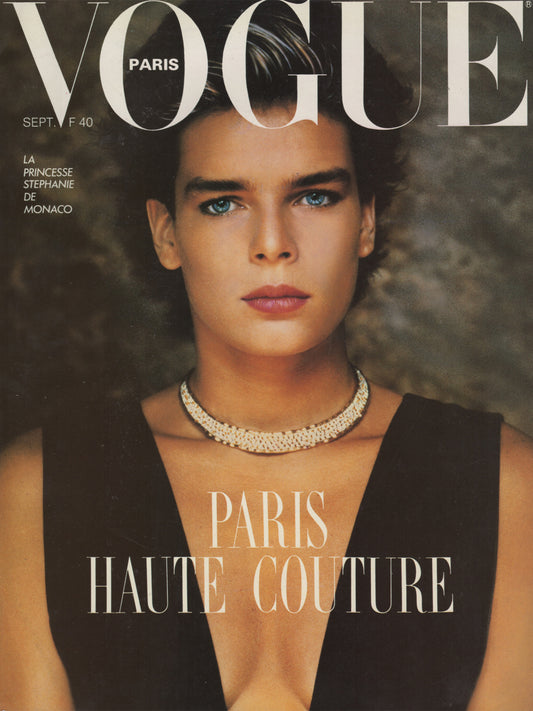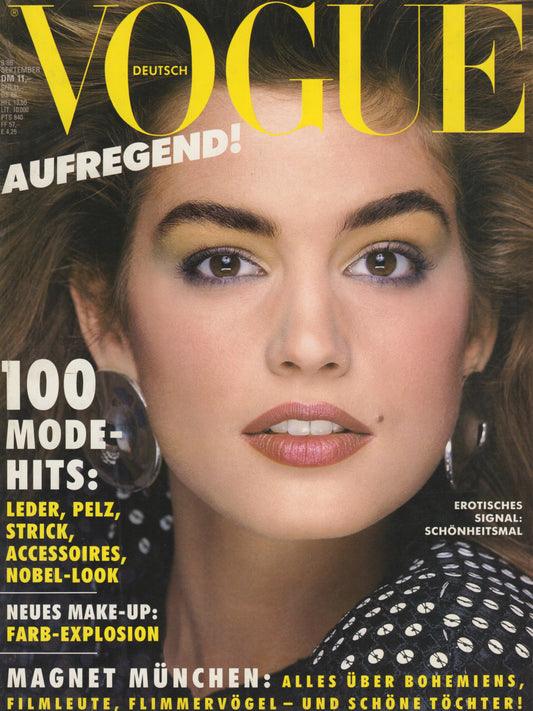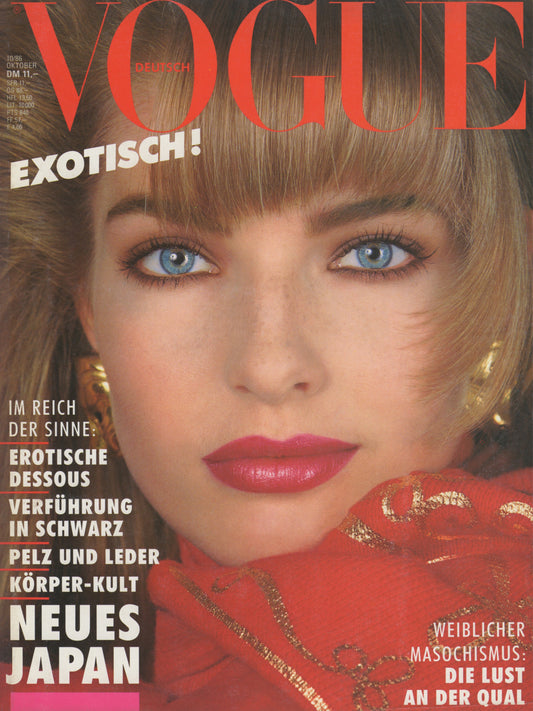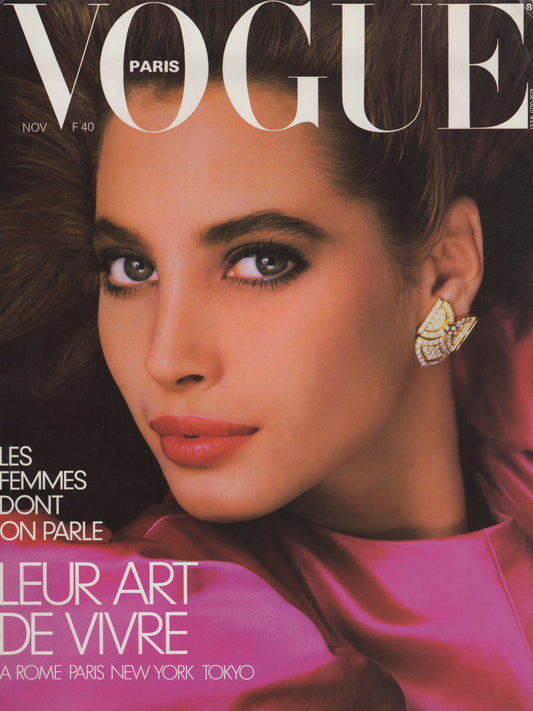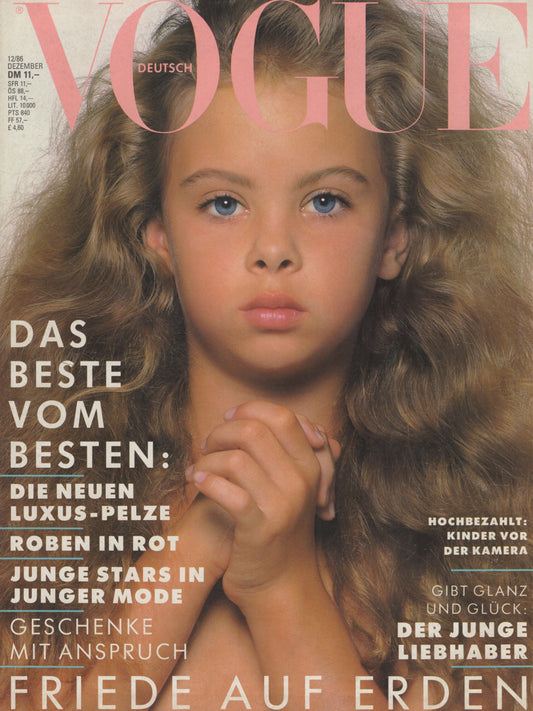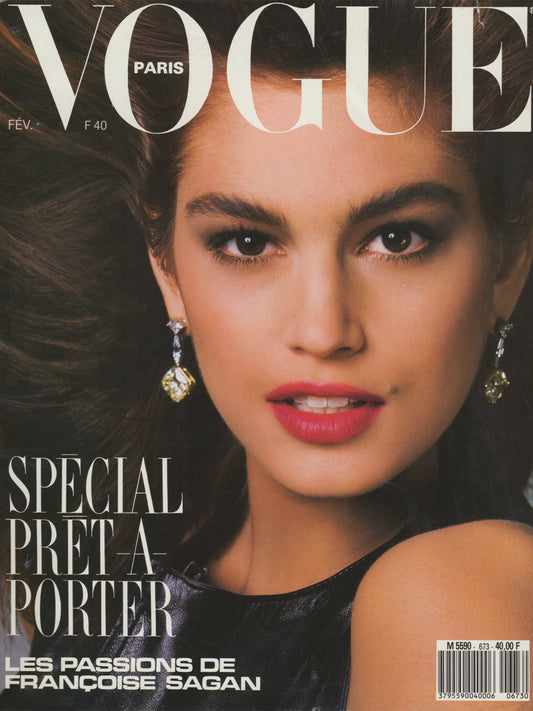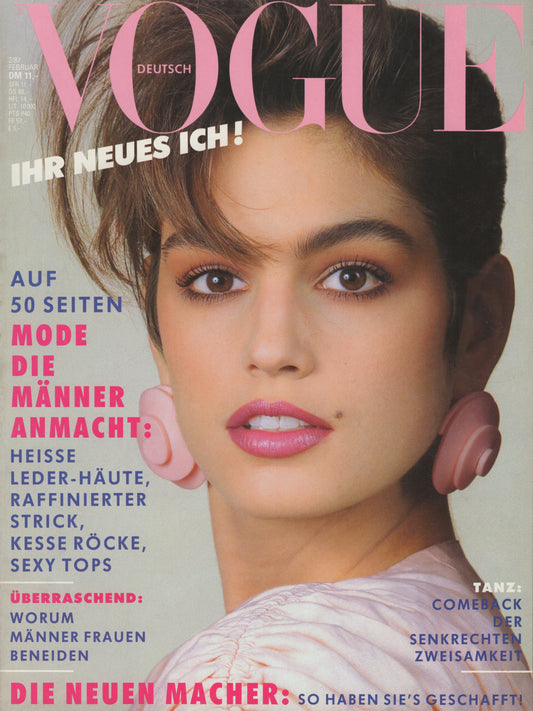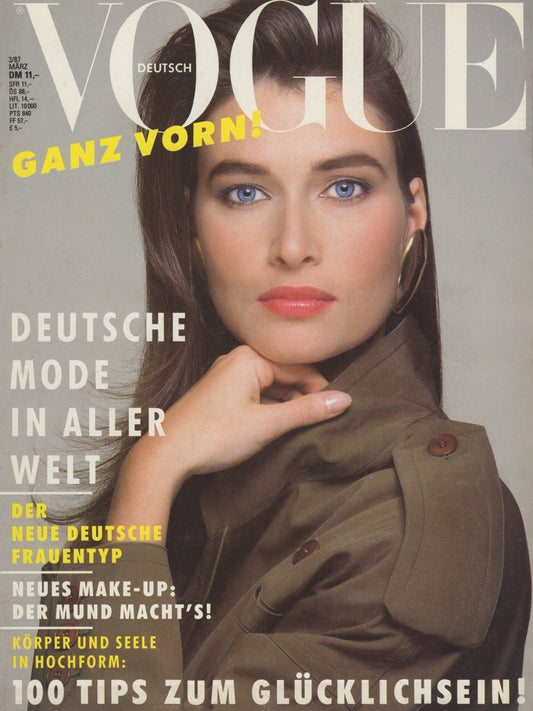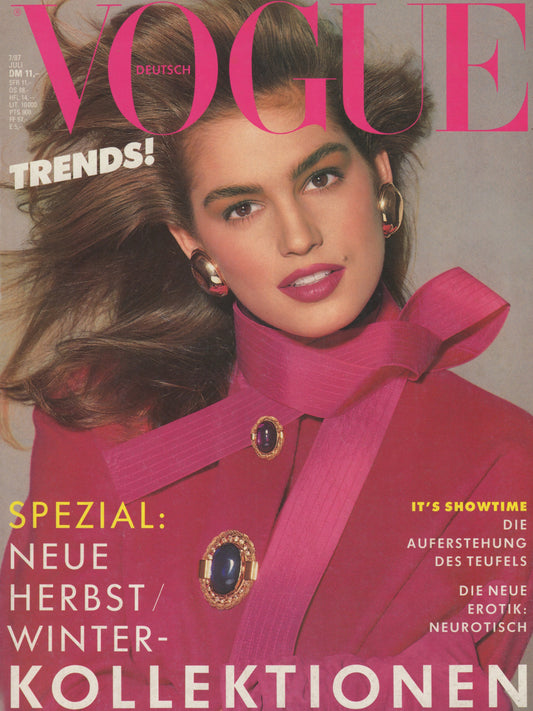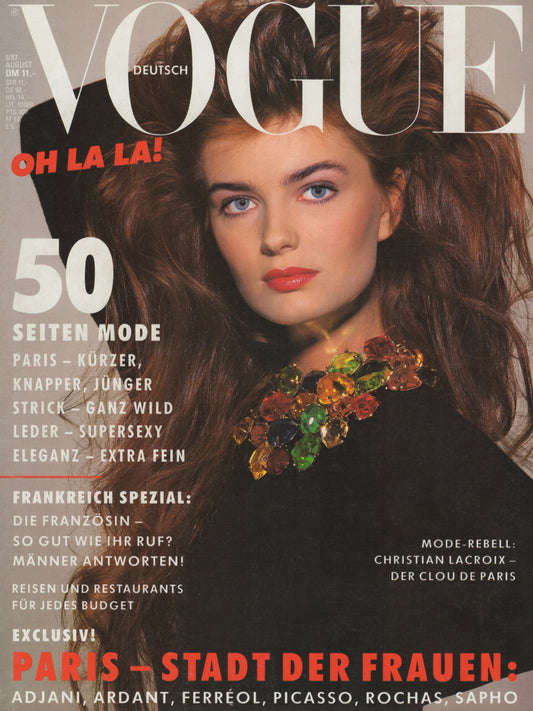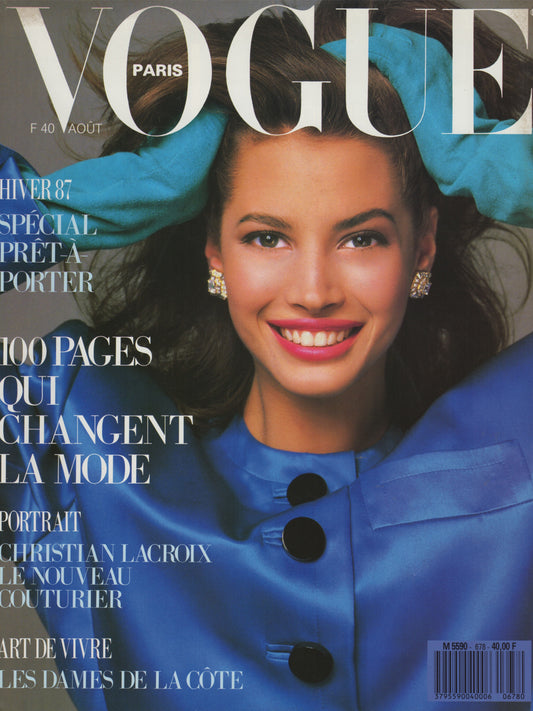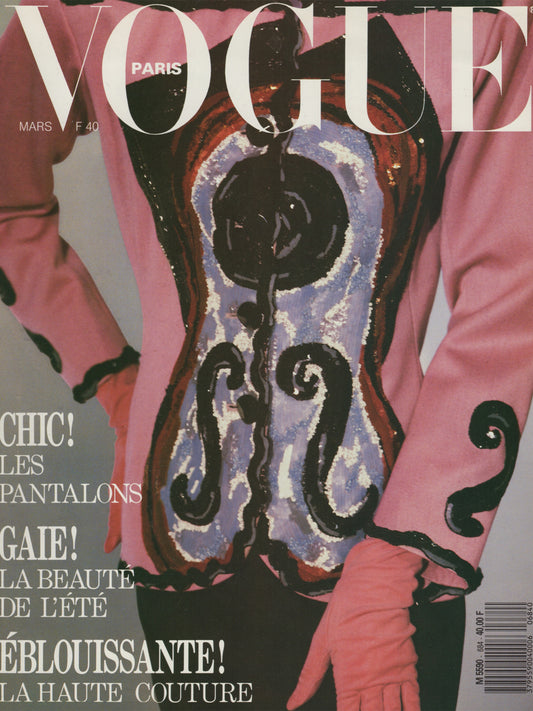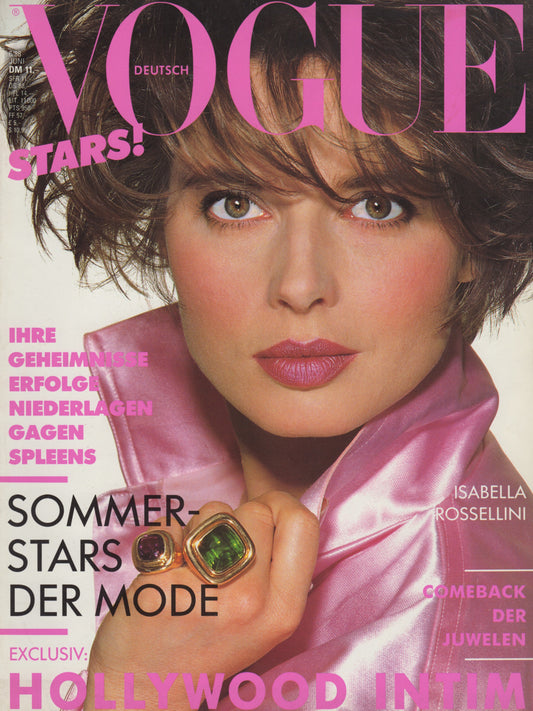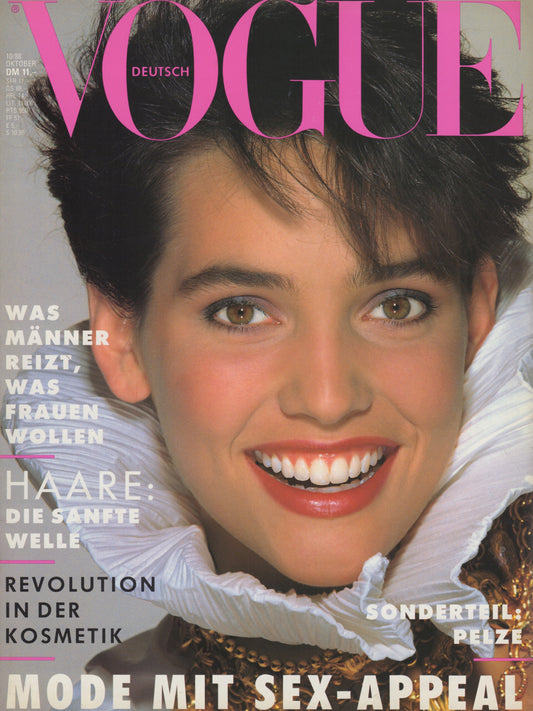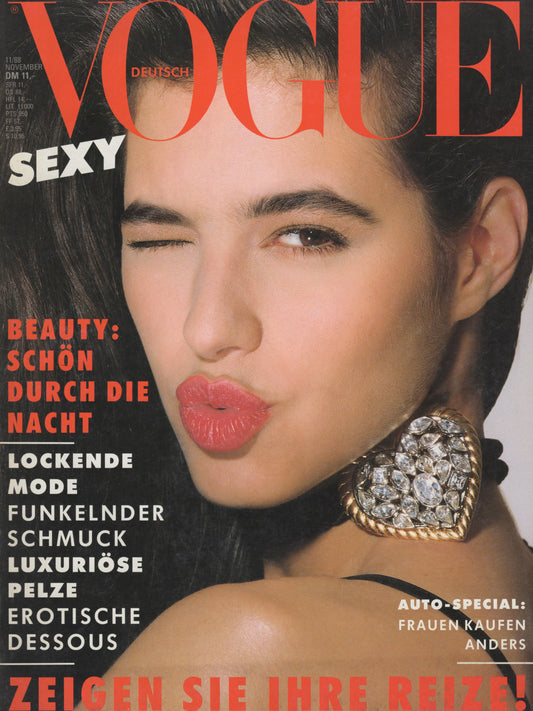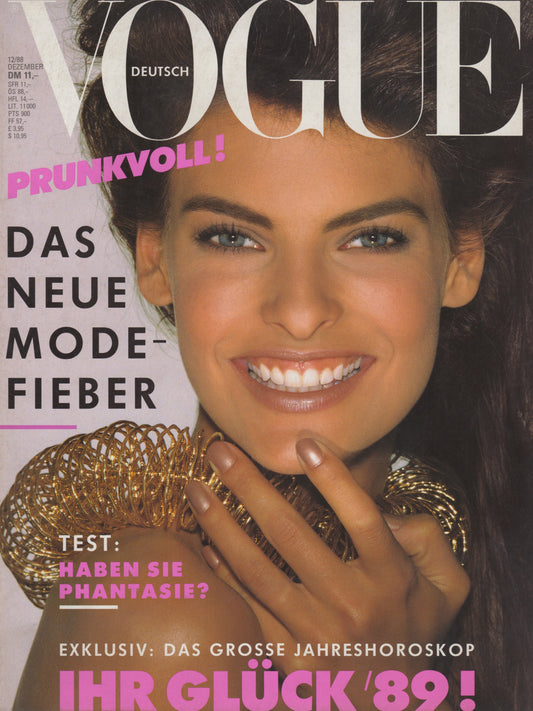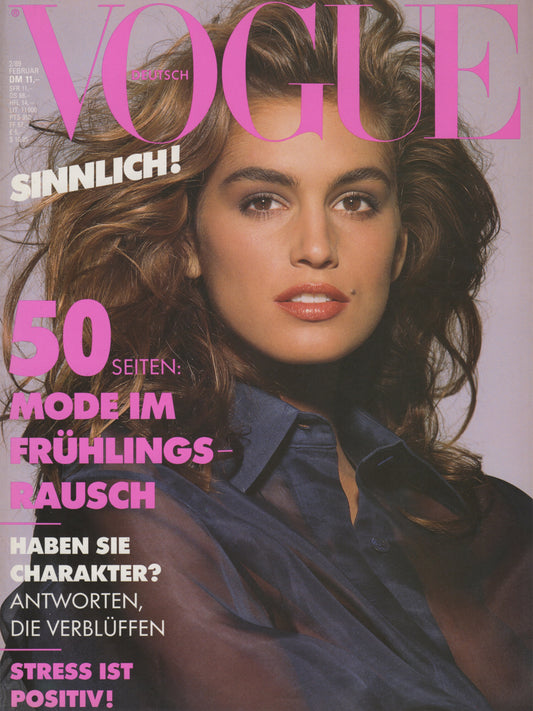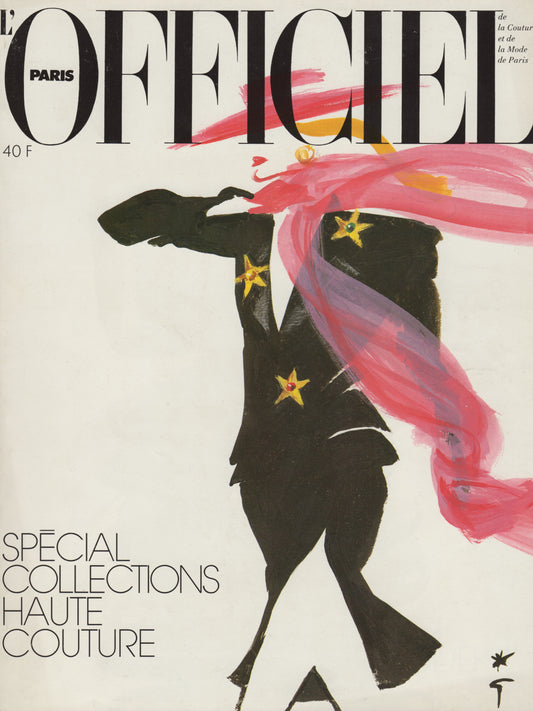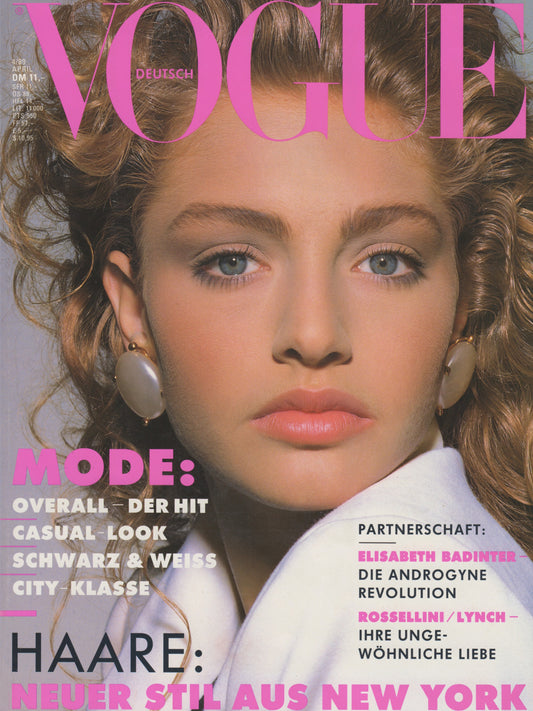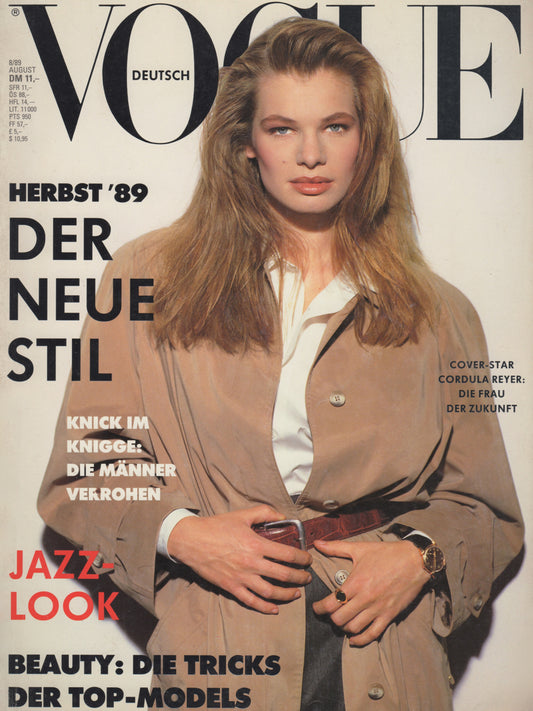The 1980s were a time of eclectic styles, with bold and unconventional influences ranging from music and pop culture to high fashion and streetwear. The career-oriented and materialistic decade saw a growing presence of women in corporate settings and became synonymous with power dressing, characterized by sharply tailored suits, padded shoulders and bold silhouettes. Women displayed a strong and confident style in the workplace, often opting for blazers with shoulder pads and wide belts, combined with slim skirts that became increasingly shorter as the decade progressed. Another hallmark of the 1980s, the decade of the yuppie phenomenon, is the emergence of designer brands and the prominent exposure of their logos. As for colors, the 1980s saw an interesting shift from the dominance of non-colors in the early years of the decade to bright solid colors in the later years.
Evening wear for women in the 1980s was characterized by opulence and glamour. The power dressing trend spread to evening occasions, and structured blazers with padded shoulders, often worn over cocktail dresses or skirts, were a common choice for evening events. Glittery sequins, metallic fabrics and bold colors were popular with evening dresses and added a sense of glamour. Off-the-shoulder or asymmetrical necklines, very short or high-low hemlines, and ruffles and ruching wer popular evening fashion styles. Since the 1980s were all about making a statement, accessories, including eye-catching jewelry and ornate evening bags, were no exception.
The early 1980s saw the emergence of the New Romantic movement, which featured flamboyant and theatrical clothing, including ruffled shirts, velvet jackets, and frilly dresses in silk taffeta, brocade, floral jacquard, tulle, and lace. Punk style continued to influence fashion, with ripped jeans, bold leather jackets, heavy makeup, and dyed hair, and the juxtaposition with elements of neo-romanticism created an unexpected new look. The music scene had a huge impact on fashion in the 1980s. MTV was founded in 1981, and icons like Madonna influenced fashion choices with their distinctive style. Television series like Dallas and Dynasty also set fashion standards. The fitness craze of the 1980s, which was all about toned, athletic bodies, led to a surge in sportswear and workout fashion. Neon-colored spandex leggings, leotards and headbands became emblematic of the aerobics trend, and daring swimwear set sexy accents. In terms of beauty, the decade was characterized by voluminous hairstyles, including perms, mullets and teased hair. Makeup was heavy and featured colorful lipstick and eye shadow, as well as bold eyebrows and heavily contoured cheeks.
The 1980s saw the rise of Italian fashion design with Giorgio Armani, Gianni Versace and Franco Moschino, the pioneering Japanese avant-garde with Issey Miyake, Yohji Yamamoto and Rei Kawakubo's Comme des Garçons, and the young French designers Claude Montana, Azzedine Alaïa, Thierry Mugler and Jean-Paul Gaultier, all of whom contributed to the scene with their distinctive artistic vision. Linda Evangelista, Christy Turlington, Naomi Campbell, Stephanie Seymour, and Claudia Schiffer took their first steps in the modeling business in the second half of the decade and would soon rise to supermodel stardom.
-
VOGUE PARIS March 1980
Regular price €0,00 EURRegular priceUnit price per -
VOGUE PARIS April 1980
Regular price €110,00 EURRegular priceUnit price per -
VOGUE PARIS May 1980
Regular price €125,00 EURRegular priceUnit price per -
VOGUE PARIS June/July 1980
Regular price €0,00 EURRegular priceUnit price per -
VOGUE PARIS August 1980
Regular price €0,00 EURRegular priceUnit price per -
VOGUE PARIS September 1980
Regular price €0,00 EURRegular priceUnit price per -
VOGUE PARIS October 1980
Regular price €180,00 EURRegular priceUnit price per -
VOGUE PARIS November 1980
Regular price €0,00 EURRegular priceUnit price per -
VOGUE PARIS December 1980/January 1981
Regular price €200,00 EURRegular priceUnit price per -
VOGUE PARIS February 1981
Regular price €145,00 EURRegular priceUnit price per -
VOGUE PARIS March 1981
Regular price €225,00 EURRegular priceUnit price per -
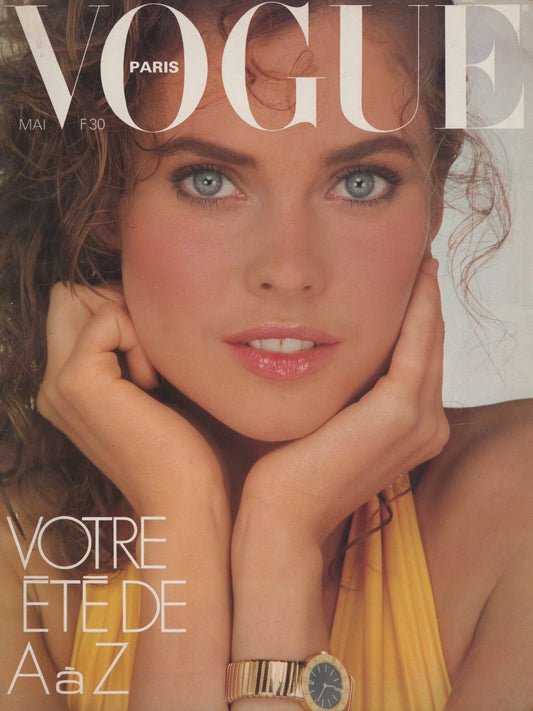 Sold
Sold -
VOGUE PARIS August 1981
Regular price €0,00 EURRegular priceUnit price per -
VOGUE PARIS September 1981
Regular price €250,00 EURRegular priceUnit price per -
VOGUE PARIS November 1981
Regular price €140,00 EURRegular priceUnit price per -
VOGUE PARIS February 1982
Regular price €180,00 EURRegular priceUnit price per -
VOGUE PARIS March 1982
Regular price €200,00 EURRegular priceUnit price per -
VOGUE PARIS April 1982
Regular price €165,00 EURRegular priceUnit price per -
VOGUE PARIS June/July 1982
Regular price €0,00 EURRegular priceUnit price per -
VOGUE PARIS September 1982
Regular price €250,00 EURRegular priceUnit price per -
LINEA ITALIANA September 1982
Regular price €0,00 EURRegular priceUnit price per -
VOGUE GERMANY October 1982
Regular price €0,00 EURRegular priceUnit price per -
VOGUE PARIS November 1982
Regular price €200,00 EURRegular priceUnit price per -
VOGUE PARIS December 1982/January 1983
Regular price €0,00 EURRegular priceUnit price per -
VOGUE PARIS February 1983
Regular price €165,00 EURRegular priceUnit price per -
VOGUE PARIS March 1983
Regular price €250,00 EURRegular priceUnit price per -
VOGUE PARIS April 1983
Regular price €155,00 EURRegular priceUnit price per -
VOGUE PARIS August 1983
Regular price €150,00 EURRegular priceUnit price per -
VOGUE PARIS September 1983
Regular price €250,00 EURRegular priceUnit price per -
VOGUE PARIS October 1983
Regular price €225,00 EURRegular priceUnit price per -
VOGUE PARIS November 1983
Regular price €150,00 EURRegular priceUnit price per -
VOGUE PARIS February 1984
Regular price €160,00 EURRegular priceUnit price per -
VOGUE PARIS April 1984
Regular price €0,00 EURRegular priceUnit price per -
VOGUE PARIS September 1984
Regular price €200,00 EURRegular priceUnit price per -
VOGUE PARIS October 1984
Regular price €0,00 EURRegular priceUnit price per -
VOGUE GERMANY November 1984
Regular price €0,00 EURRegular priceUnit price per -
VOGUE PARIS December 1984/January 1985
Regular price €145,00 EURRegular priceUnit price per -
VOGUE PARIS February 1985
Regular price €0,00 EURRegular priceUnit price per -
VOGUE PARIS March 1985
Regular price €0,00 EURRegular priceUnit price per -
VOGUE GERMANY March 1985
Regular price €200,00 EURRegular priceUnit price per -
VOGUE PARIS April 1985
Regular price €130,00 EURRegular priceUnit price per -
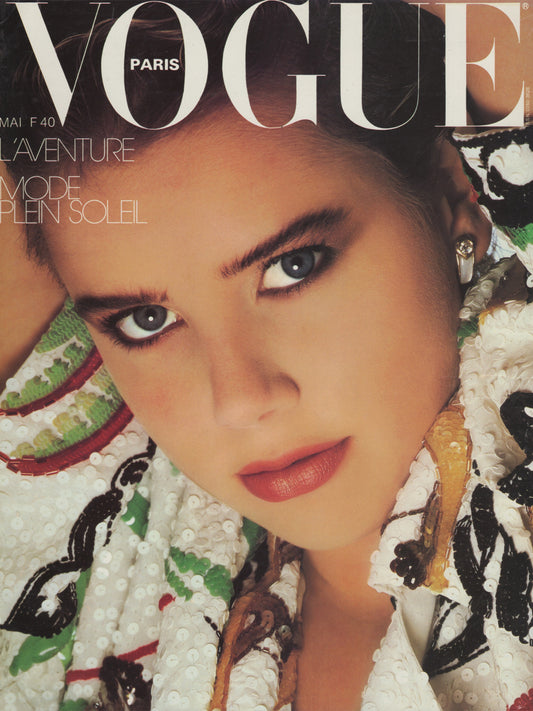 Sold
Sold -
VOGUE GERMANY June 1985
Regular price €0,00 EURRegular priceUnit price per -
VOGUE PARIS June/July 1985
Regular price €125,00 EURRegular priceUnit price per -
VOGUE PARIS August 1985
Regular price €0,00 EURRegular priceUnit price per -
VOGUE GERMANY August 1985
Regular price €180,00 EURRegular priceUnit price per -
VOGUE GERMANY September 1985
Regular price €200,00 EURRegular priceUnit price per -
VOGUE PARIS September 1985
Regular price €225,00 EURRegular priceUnit price per -
VOGUE GERMANY October 1985
Regular price €0,00 EURRegular priceUnit price per -
VOGUE PARIS November 1985
Regular price €125,00 EURRegular priceUnit price per -
VOGUE GERMANY November 1985
Regular price €300,00 EURRegular priceUnit price per -
VOGUE GERMANY December 1985
Regular price €275,00 EURRegular priceUnit price per -
VOGUE PARIS December 1985/January 1986
Regular price €0,00 EURRegular priceUnit price per -
VOGUE GERMANY January 1986
Regular price €0,00 EURRegular priceUnit price per -
VOGUE PARIS February 1986
Regular price €150,00 EURRegular priceUnit price per -
VOGUE GERMANY February 1986
Regular price €100,00 EURRegular priceUnit price per -
VOGUE PARIS March 1986
Regular price €200,00 EURRegular priceUnit price per -
VOGUE GERMANY March 1986
Regular price €160,00 EURRegular priceUnit price per -
VOGUE PARIS April 1986
Regular price €0,00 EURRegular priceUnit price per -
VOGUE GERMANY April 1986
Regular price €170,00 EURRegular priceUnit price per -
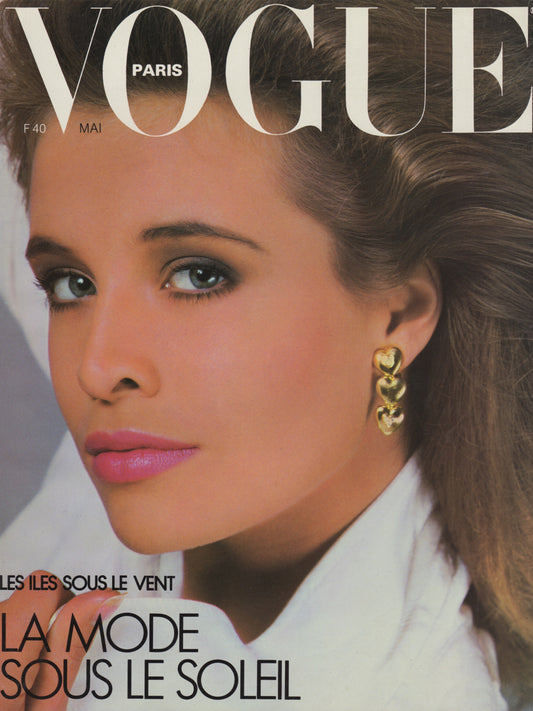 Sold
Sold -
VOGUE GERMANY May 1986
Regular price €0,00 EURRegular priceUnit price per -
VOGUE GERMANY June 1986
Regular price €180,00 EURRegular priceUnit price per -
VOGUE PARIS August 1986
Regular price €180,00 EURRegular priceUnit price per -
VOGUE GERMANY August 1986
Regular price €180,00 EURRegular priceUnit price per -
VOGUE PARIS September 1986
Regular price €300,00 EURRegular priceUnit price per -
VOGUE GERMANY September 1986
Regular price €200,00 EURRegular priceUnit price per -
VOGUE GERMANY October 1986
Regular price €180,00 EURRegular priceUnit price per -
VOGUE PARIS November 1986
Regular price €0,00 EURRegular priceUnit price per -
VOGUE GERMANY December 1986
Regular price €225,00 EURRegular priceUnit price per -
VOGUE PARIS February 1987
Regular price €0,00 EURRegular priceUnit price per -
VOGUE GERMANY February 1987
Regular price €180,00 EURRegular priceUnit price per -
VOGUE GERMANY March 1987
Regular price €0,00 EURRegular priceUnit price per -
VOGUE GERMANY July 1987
Regular price €180,00 EURRegular priceUnit price per -
VOGUE GERMANY August 1987
Regular price €180,00 EURRegular priceUnit price per -
VOGUE PARIS August 1987
Regular price €0,00 EURRegular priceUnit price per -
VOGUE PARIS March 1988
Regular price €175,00 EURRegular priceUnit price per -
VOGUE GERMANY June 1988
Regular price €180,00 EURRegular priceUnit price per -
VOGUE GERMANY October 1988
Regular price €180,00 EURRegular priceUnit price per -
VOGUE GERMANY November 1988
Regular price €0,00 EURRegular priceUnit price per -
VOGUE GERMANY December 1988
Regular price €0,00 EURRegular priceUnit price per -
VOGUE GERMANY February 1989
Regular price €200,00 EURRegular priceUnit price per -
L'OFFICIEL PARIS March 1989
Regular price €160,00 EURRegular priceUnit price per -
VOGUE GERMANY April 1989
Regular price €180,00 EURRegular priceUnit price per -
VOGUE GERMANY August 1989
Regular price €175,00 EURRegular priceUnit price per -
VOGUE GERMANY September 1989
Regular price €225,00 EURRegular priceUnit price per
Fashion Timeline 1980-1989
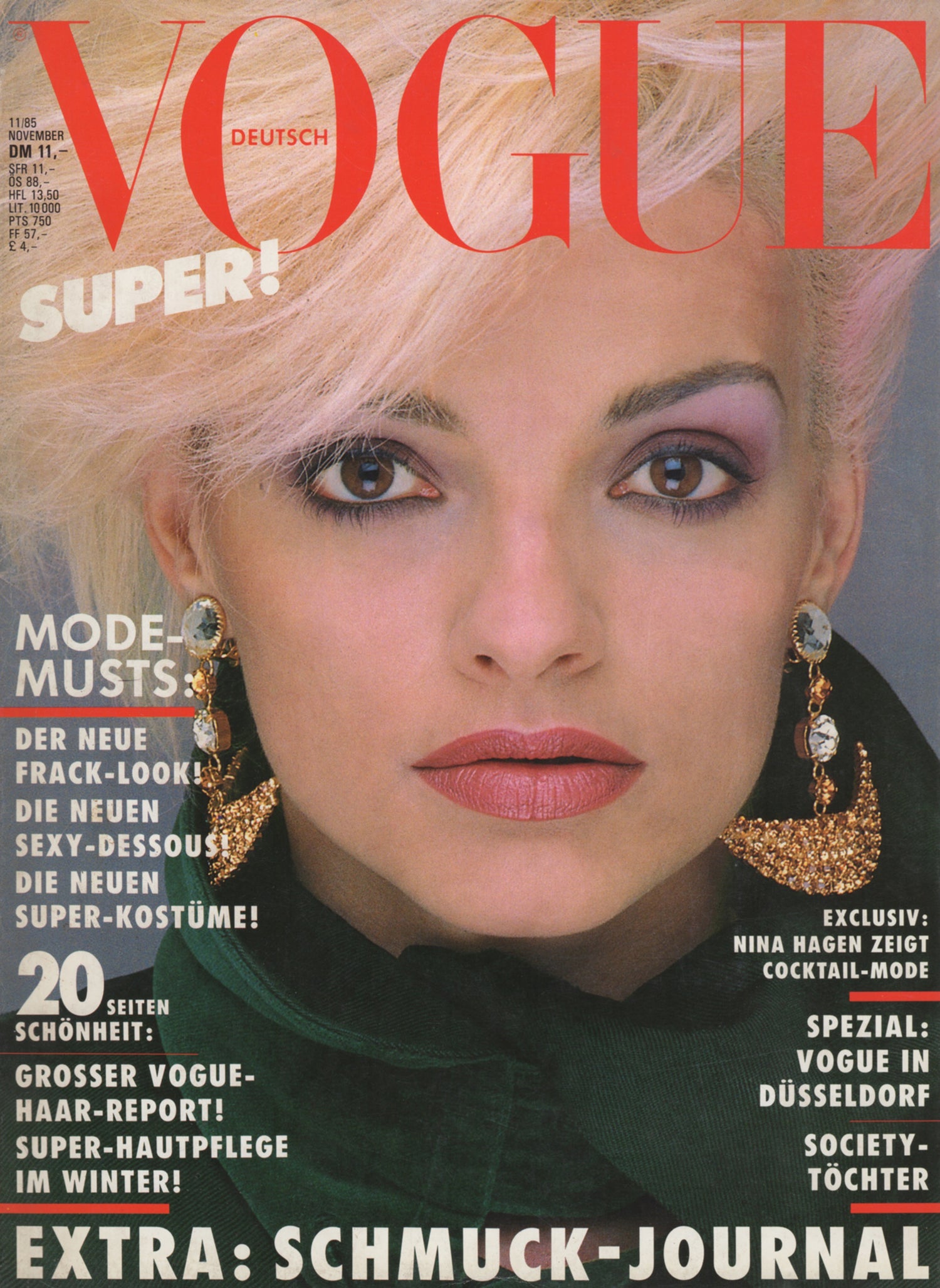
1980
15-year-old Brooke Shields models in a controversial ad for Calvin Klein jeans with the provocative slogan “Do you know what comes between me and my Calvins? Nothing.” Issey Miyake presents his iconic plastic bustiers, molded on a woman’ torso, for the finale of his Fall collection. Azzedine Alaïa opens his atelier in Paris. Sir Cecil Beaton dies.
1981
Christian Lacroix becomes head designer of Jean Patou. Yves Saint Laurent presents his Matisse-inspired collection. Rei Kawakubo and Yohji Yamamoto show for the first time in Paris. Vivienne Westwood introduces her "Pirate" collection.
1982
Calvin Klein launches his underwear line. Vivienne Westwood presents the collections "Savage" and "Buffalo Girls (Nostalgia of Mud)". Gianni Versace invents Oroton, a metal chainmail that combines the particular texture of metal with the fluidity of silk. Pierre Balmain dies and is succeeded by his partner and assistant Erik Mortensen.
1983
Karl Lagerfeld presents his first collection for Chanel and the iconic guitar dress and shower dress for Chloé. His muse Inès de la Fressange signs an exclusive contract with Chanel. The model bears a striking resemblance to Coco Chanel. Katharine Hamnett introduces her slogan t-shirts. Franco Moschino launches his Couture! line.
1984
Karl Lagerfeld's spring collection for Chloé marks the end of a 19-year collaboration between the designer and the house. His final collection is a whimsical tribute to dressmaking and includes the iconic scissor dress. The designer now focuses on his collaboration with Chanel and also launches the Karl Lagerfeld label. Jean Paul Gaultier introduces his groundbreaking cone bra designs. John Galliano graduates from Central Saint Martins with "Les Incroyables". Rifat Ozbek launches his eponymous label.
1985
Azzedine Alaïa is awarded two fashion Oscars from the French Federation of Couture. Grace Jones, who accompanies Alaïa to the ceremony, wears the iconic pink hooded dress with openwork lacing on the side. Jean Paul Gaultier introduces his line Junior Gaultier, which will be produced until 1994. Romeo Gigli presents his 25-piece debut collection. Dolce & Gabbana show their first collection. Vivienne Westwood launches the mini-crini skirt. Rudi Gernreich dies.
1986
Belgian designers Walter van Beirendonck, Ann Demeulemeester, Dries van Noten, Dirk van Saene, Dirk Bikkembergs and Marina Yee show collectively at London Fashion Week and make their mark on the fashion world as "The Antwerp Six". John Galliano presents his collections "Fallen Angels" and "Forgotten Innocents". Vivienne Westwood introduces the orb logo. Gianfranco Ferré launches his Haute Couture collection. Perry Ellis passes away.
1987
Christian Lacroix launches his Haute Couture line, followed by Prêt-à-Porter in 1988, as well as handbags, jewelry, and accessories in 1989. Vivienne Westwood presents her "Harris Tweed" collection. Michel Goma becomes the creative director of Balenciaga. Fashion illustrator Antonio Lopez dies.
1988
Jean-Charles de Castelbajac presents the iconic "Arche de Noé" teddy bear jacket. Romeo Gigli shows his collection for the first time in Paris. Franco Moschino introduces his Cheap and Chic line. Rei Kawakubo launches the biannual magazine SIX to convey her artistic vision. A total of eight issues are published until 1991. Martin Margiela founds his eponymous label. Jules-François Crahay passes away.
1989
Gianfranco Ferré becomes creative director of Christian Dior until 1996, succeeding Marc Bohan. Isse Miyake presents his groundbreaking collection with pleated avant-garde designs. Martin Margiela presents his first collection for Spring 1990. Jean Paul Gaultier introduces his "cage" designs. Claude Montana is appointed creative director of Lanvin's haute couture division and will design a total of five collections for the house (from Spring 1990 to Spring 1992). Gianni Versace launches the Versus diffusion line. Guy Laroche dies and is succeeded by Angelo Tarlazzi. Diana Vreeland, Louise Dahl-Wolfe and Regina Relang pass away.
